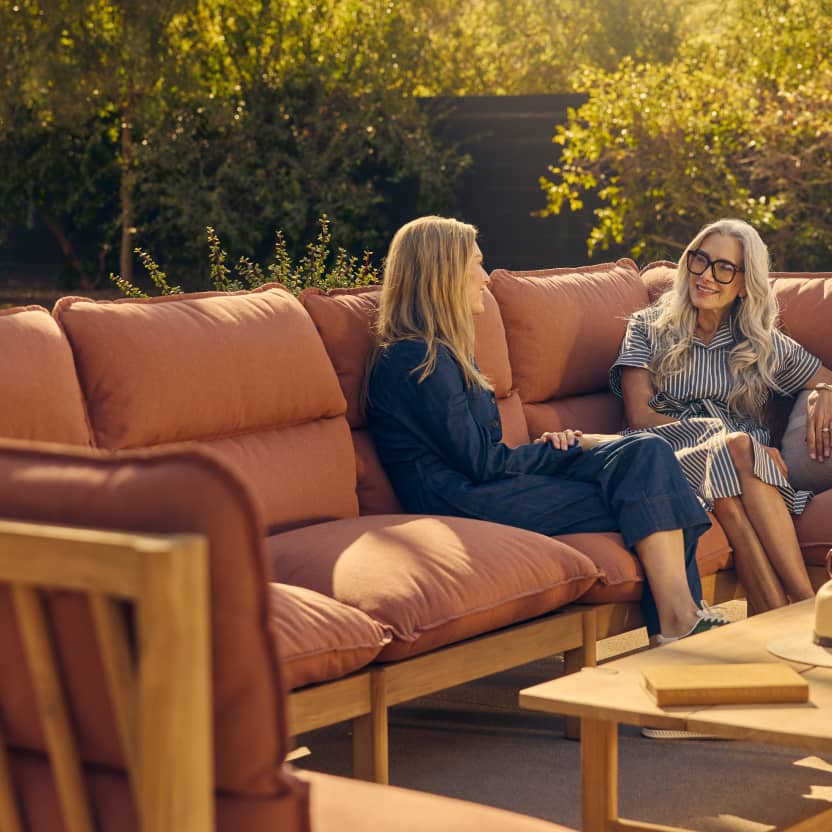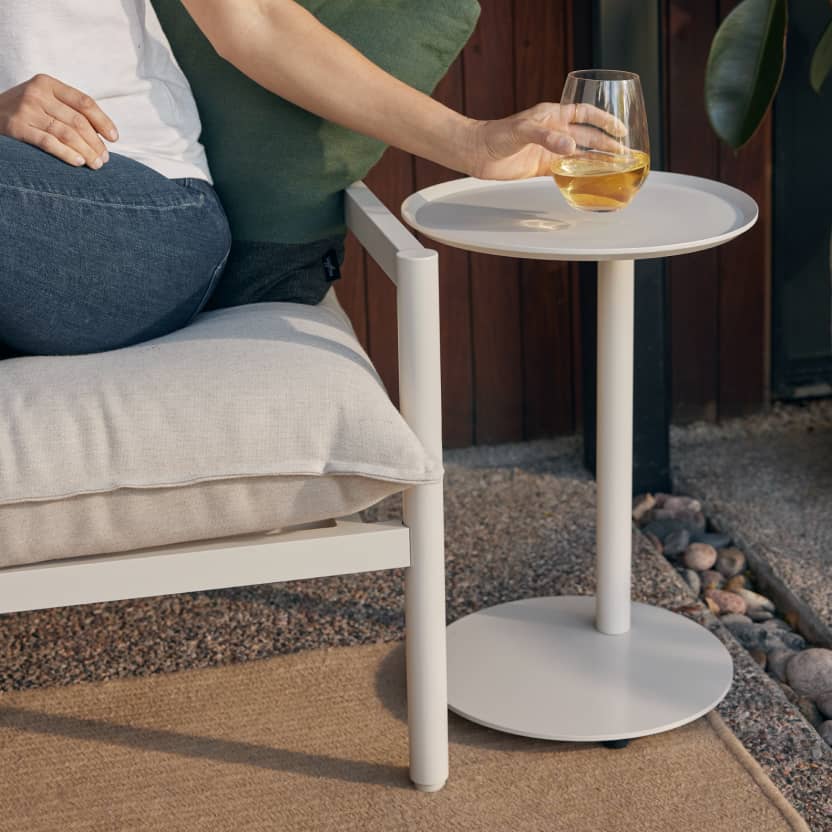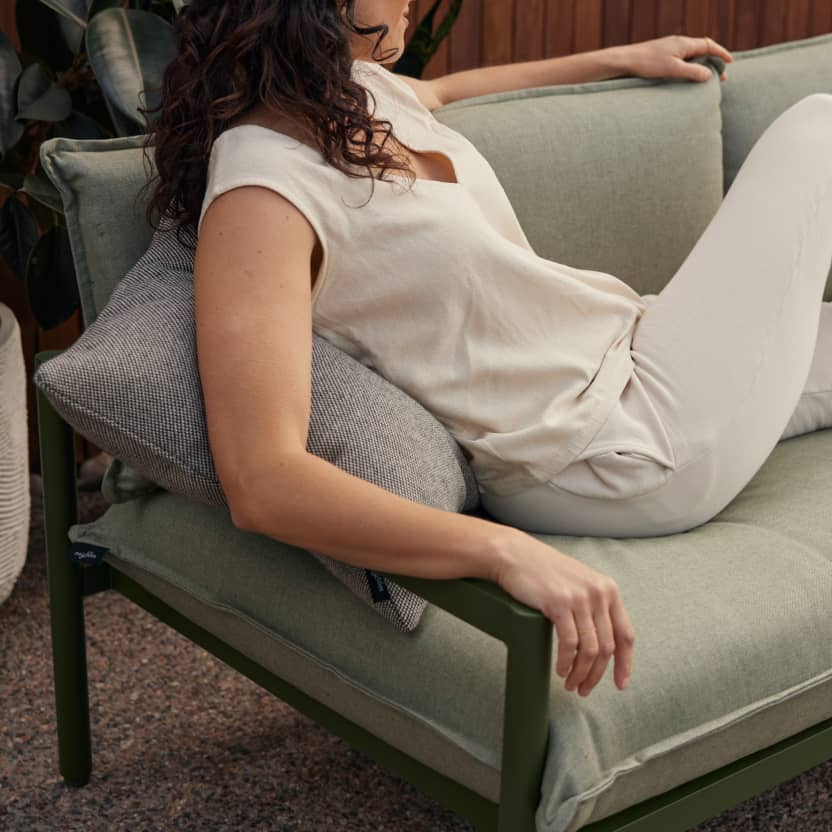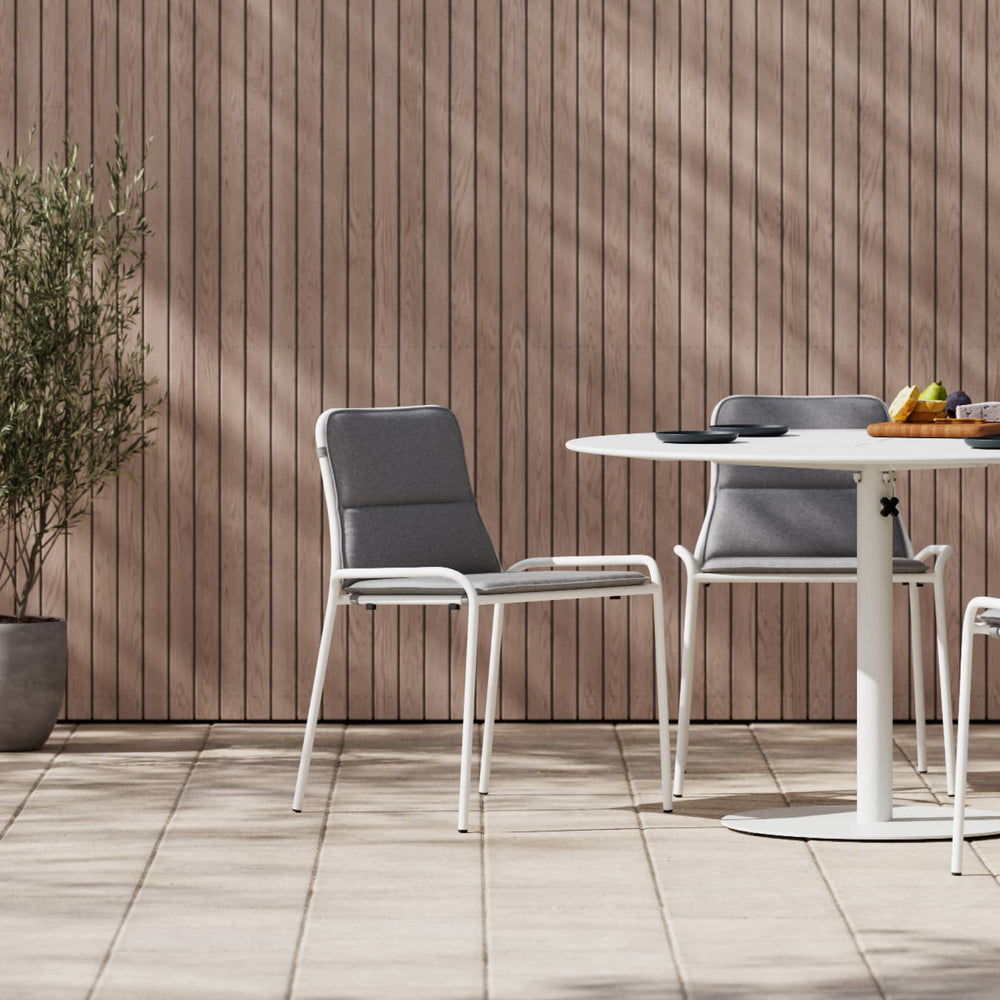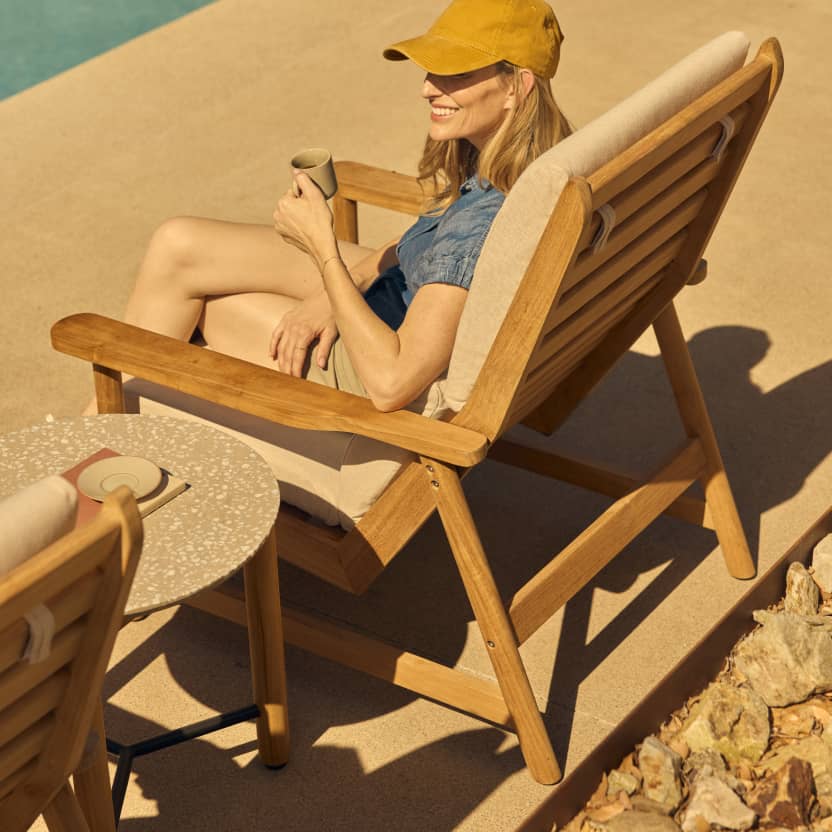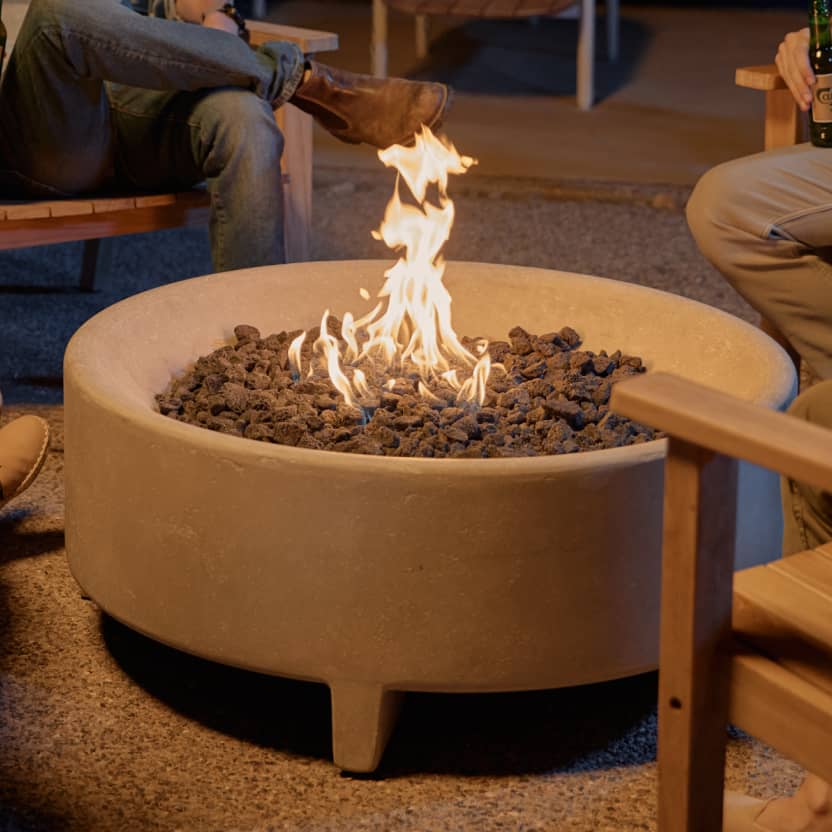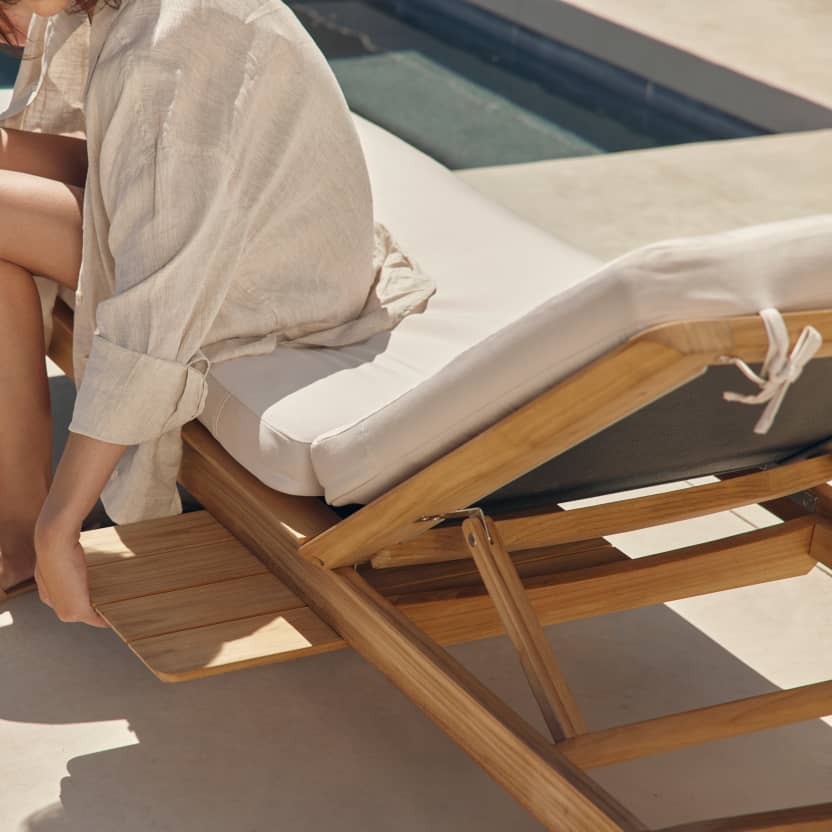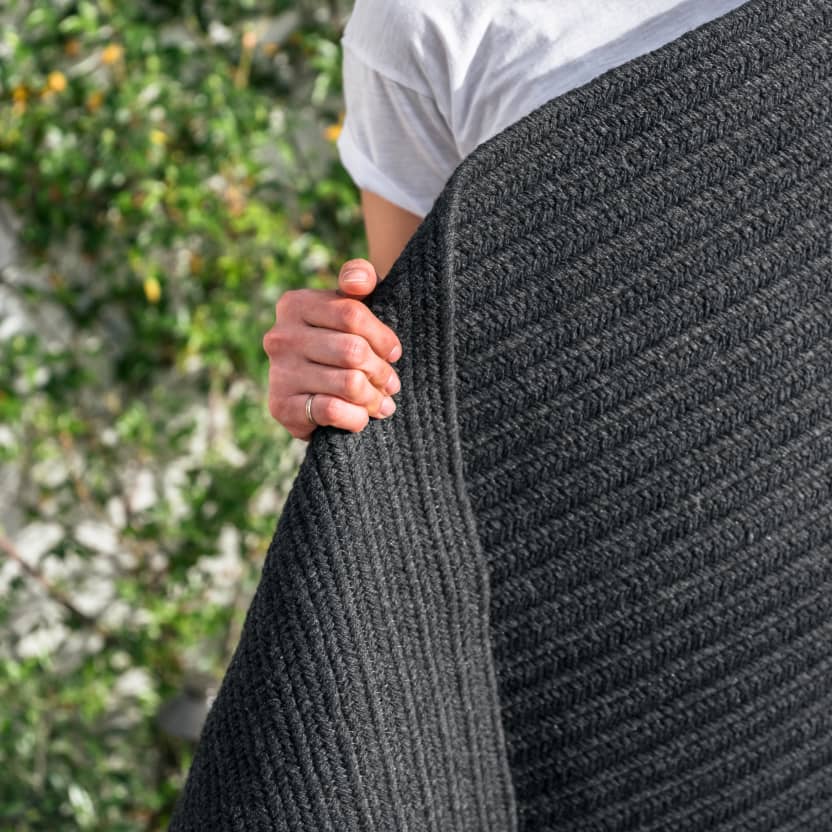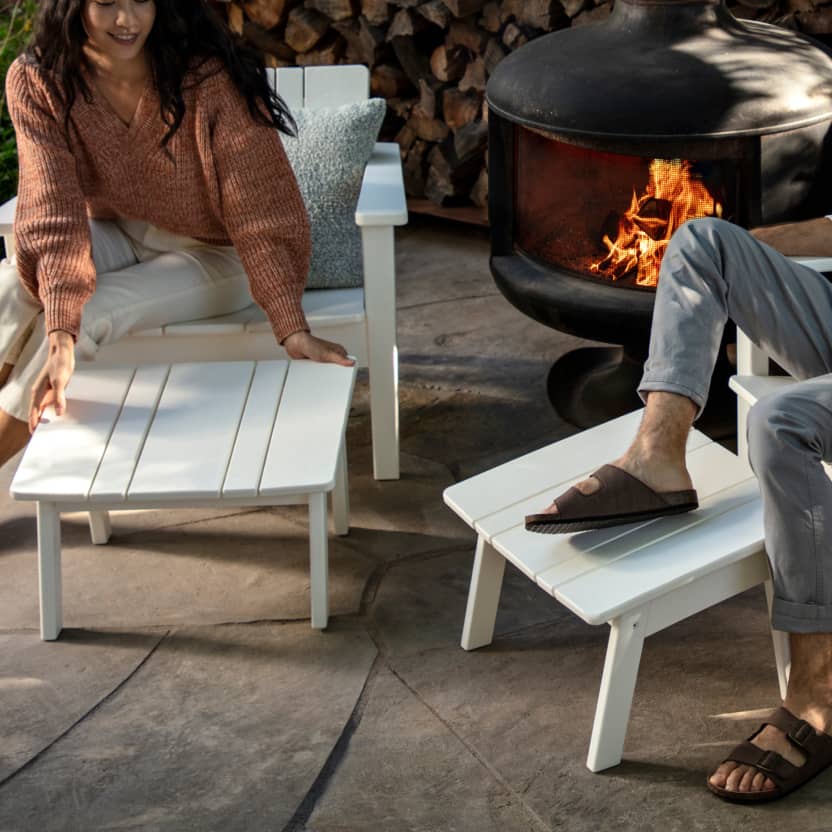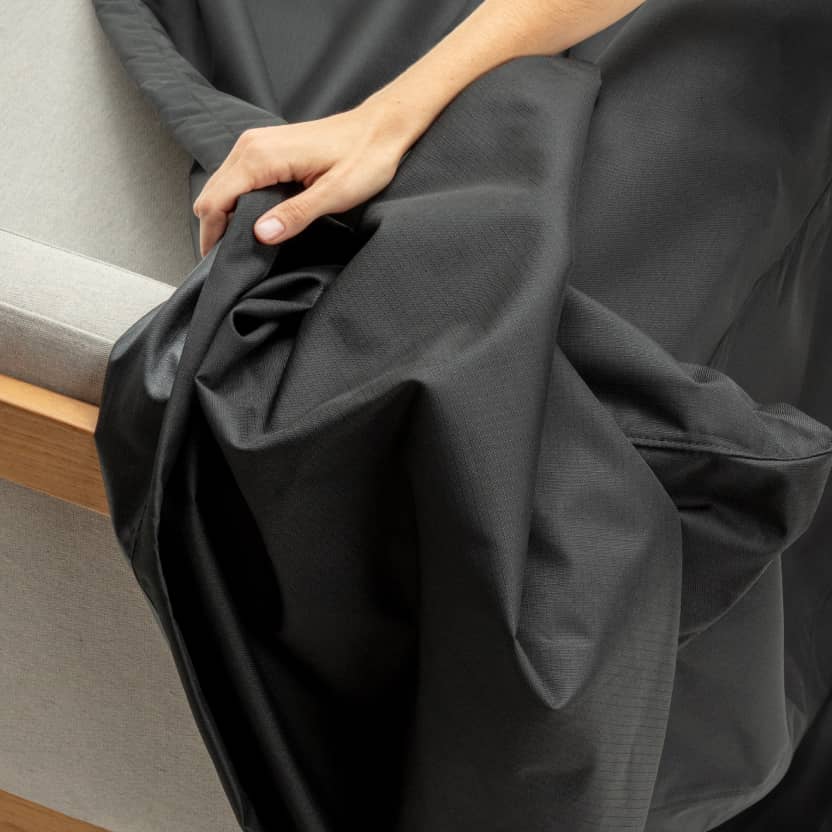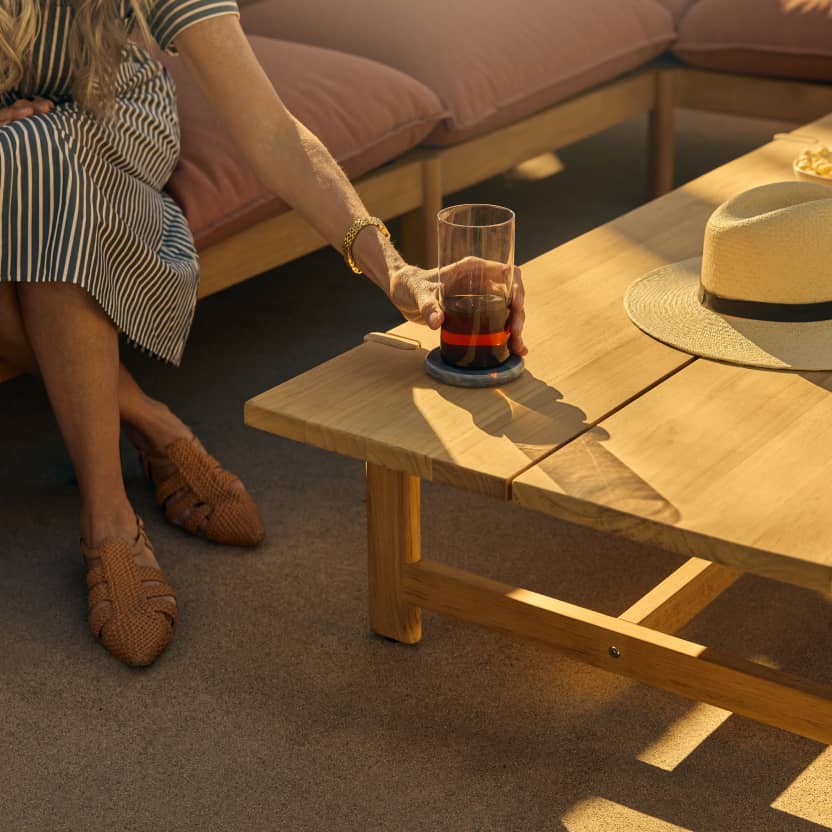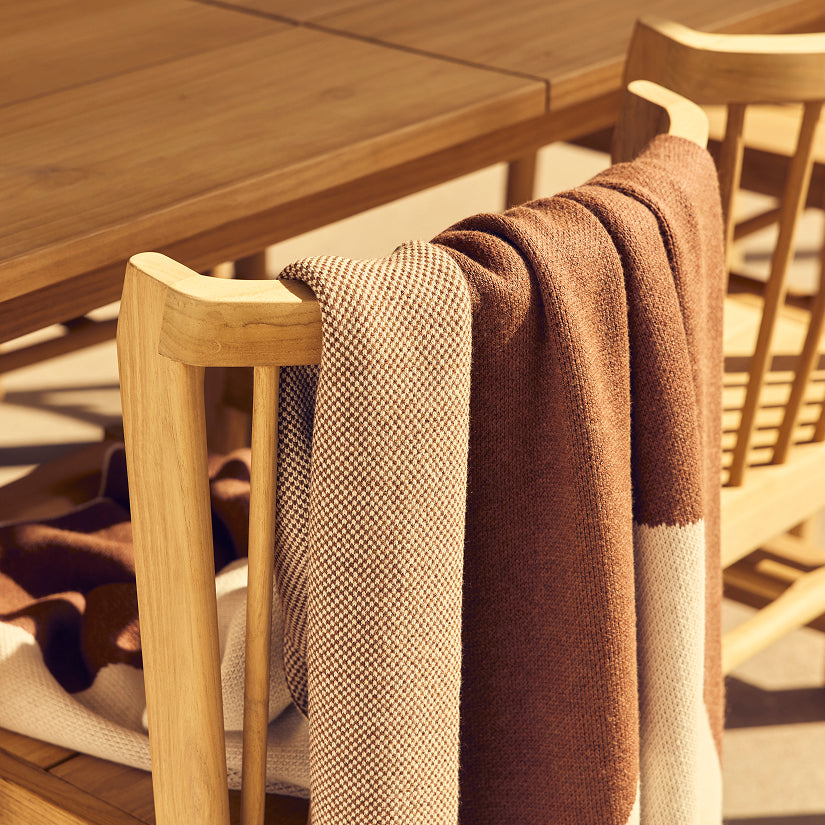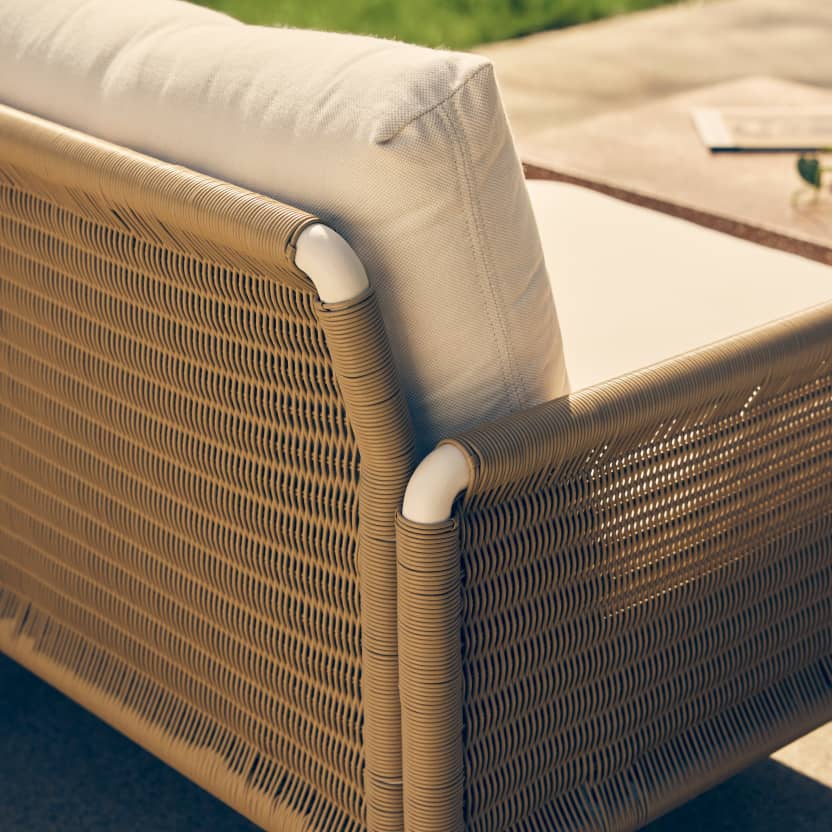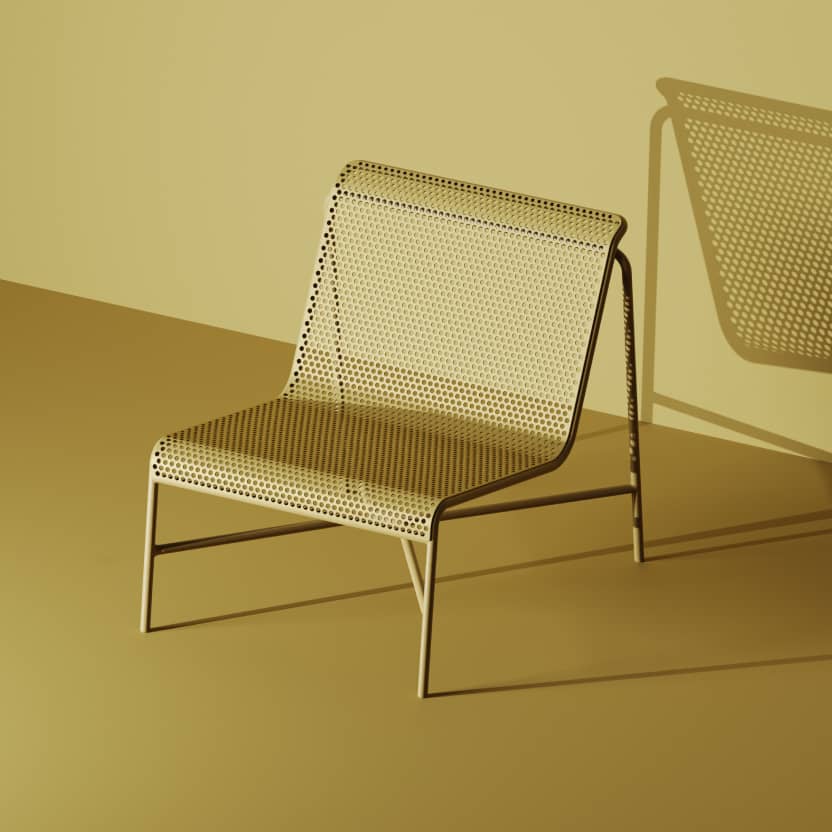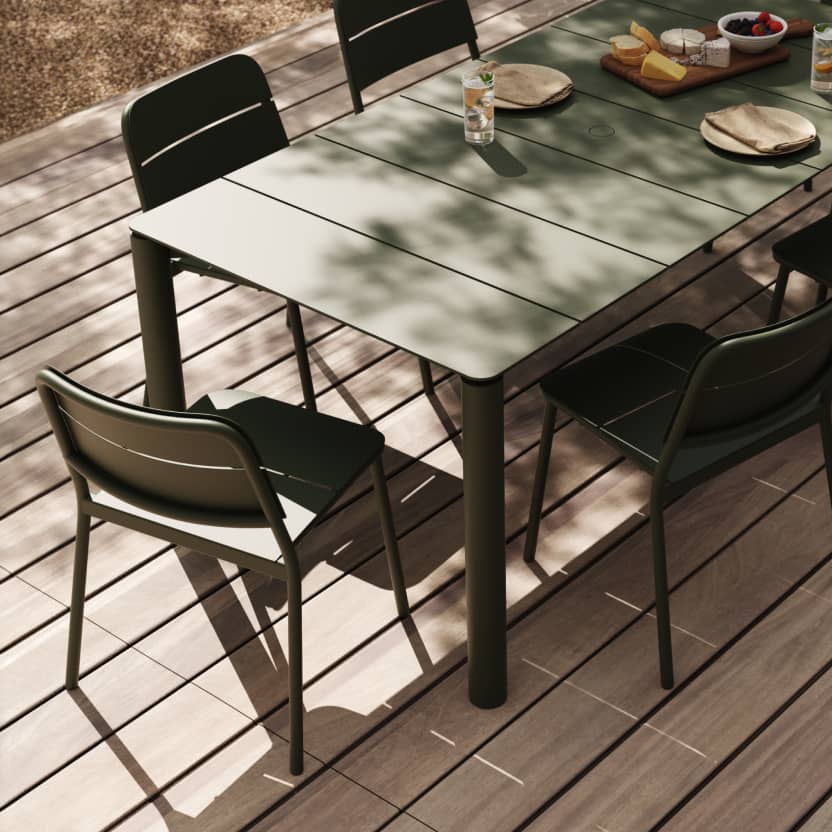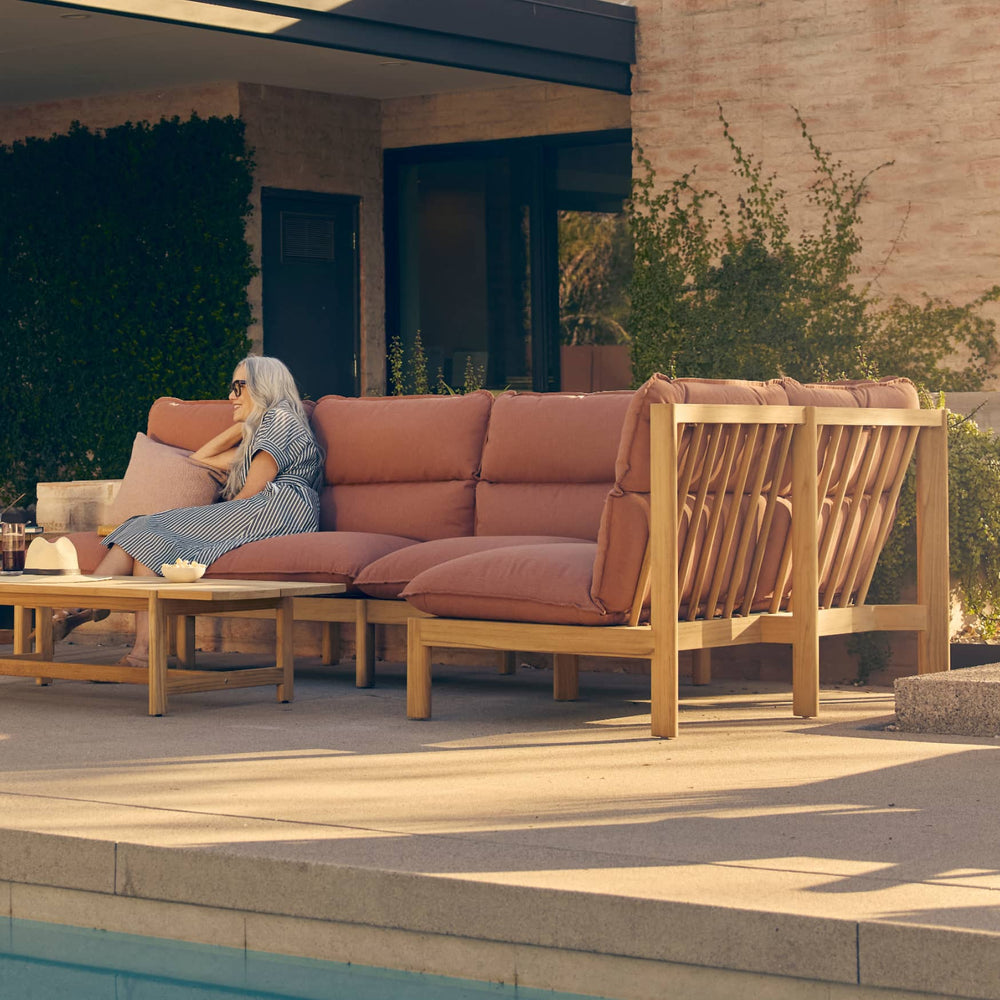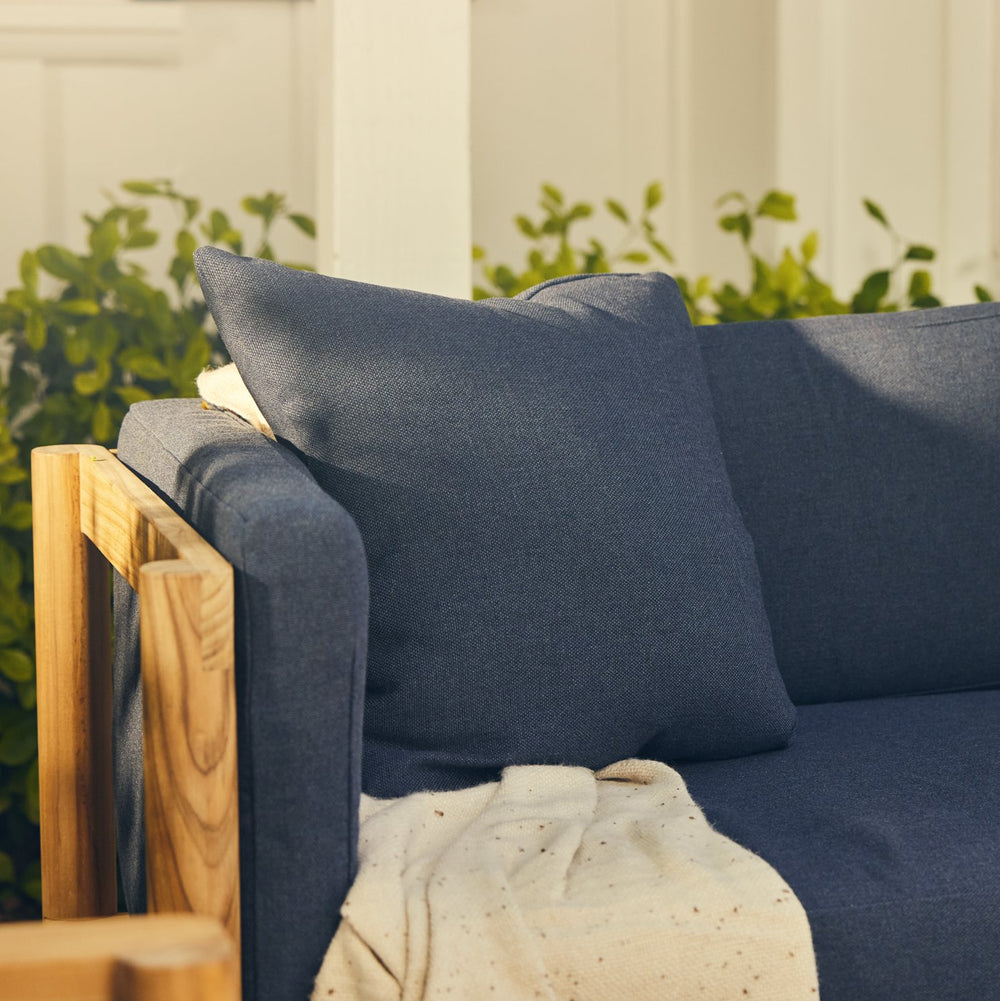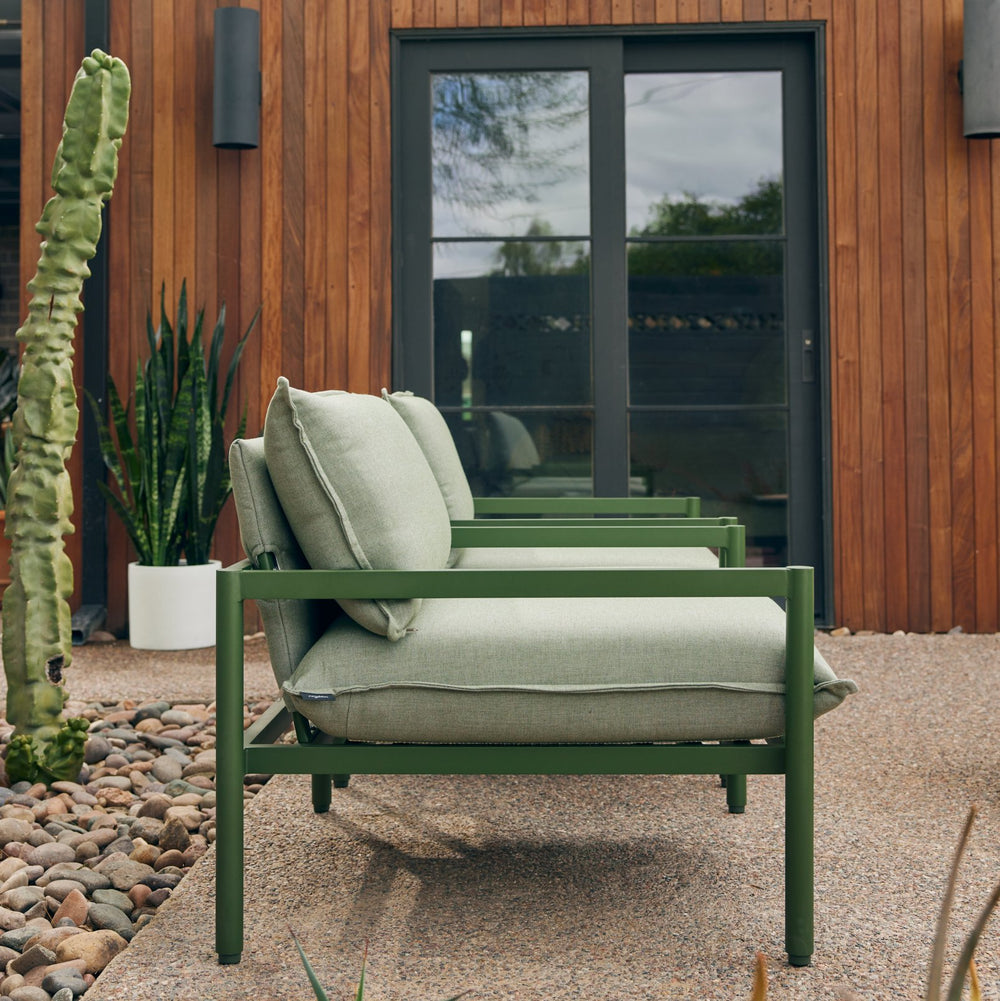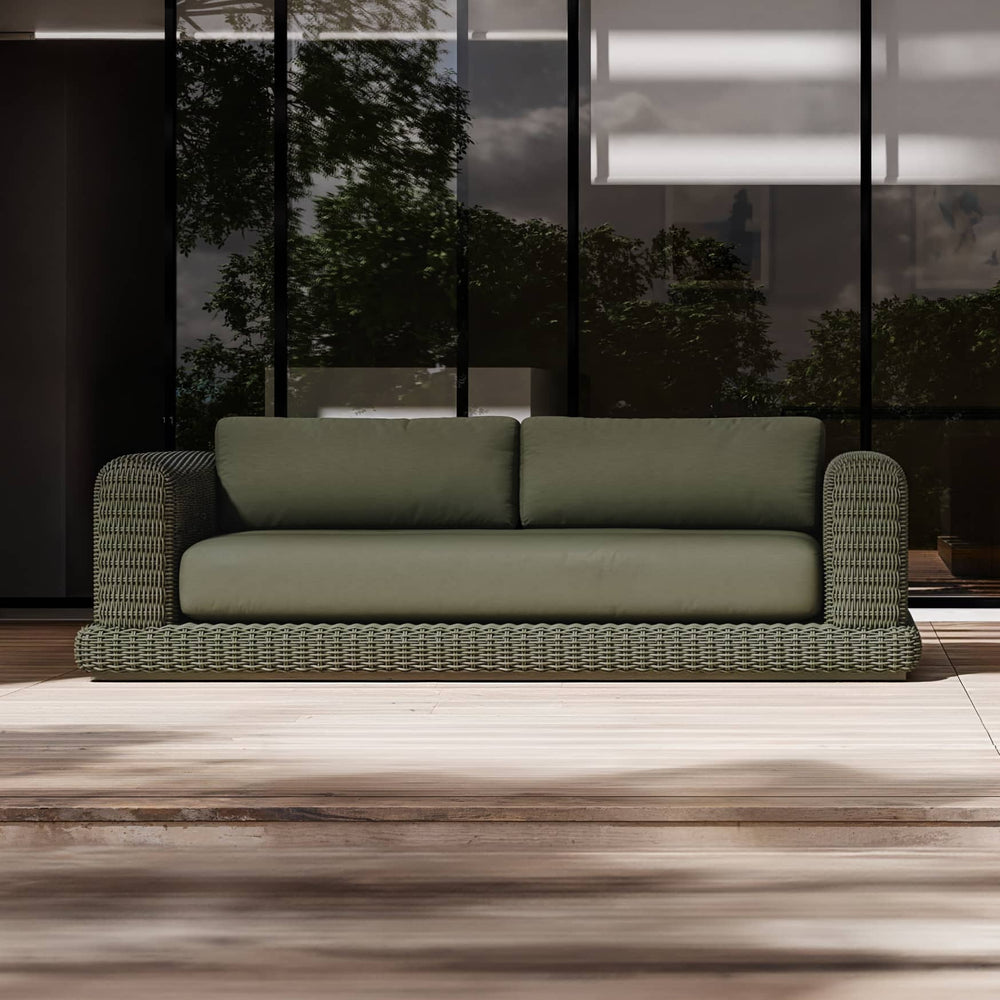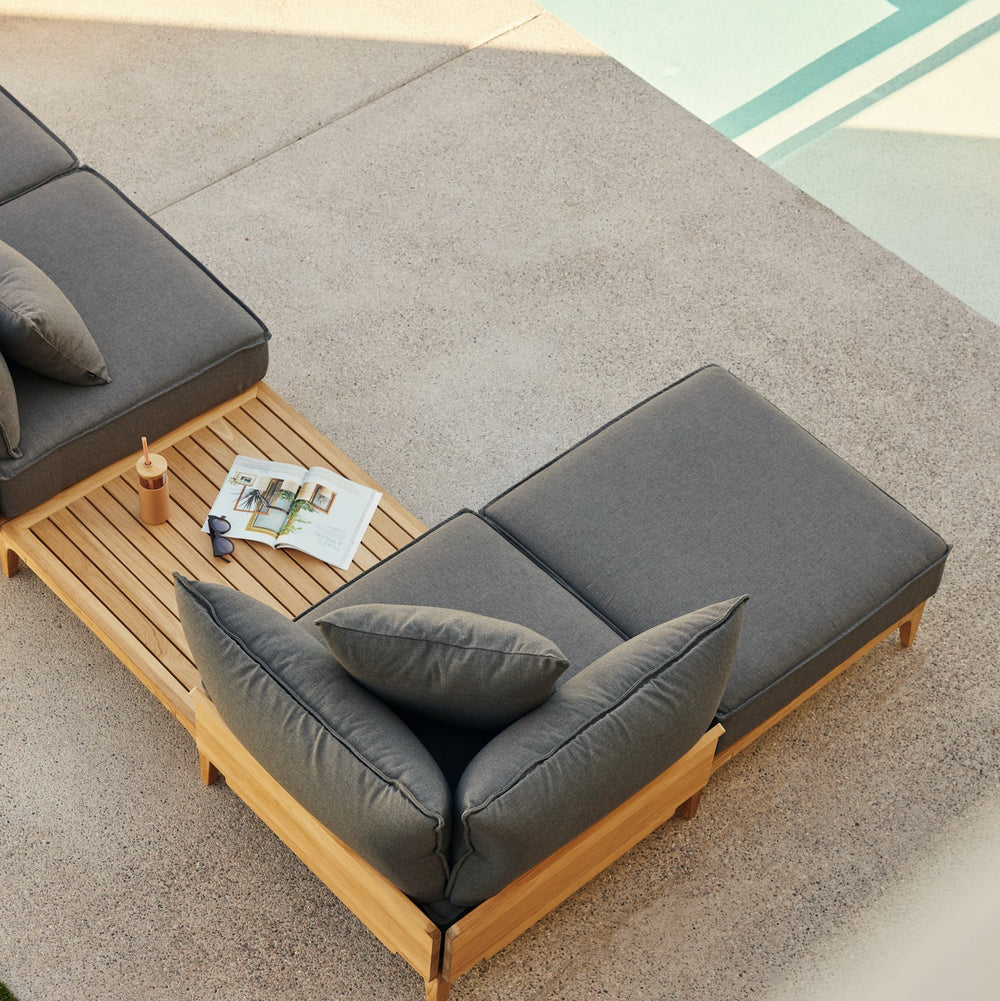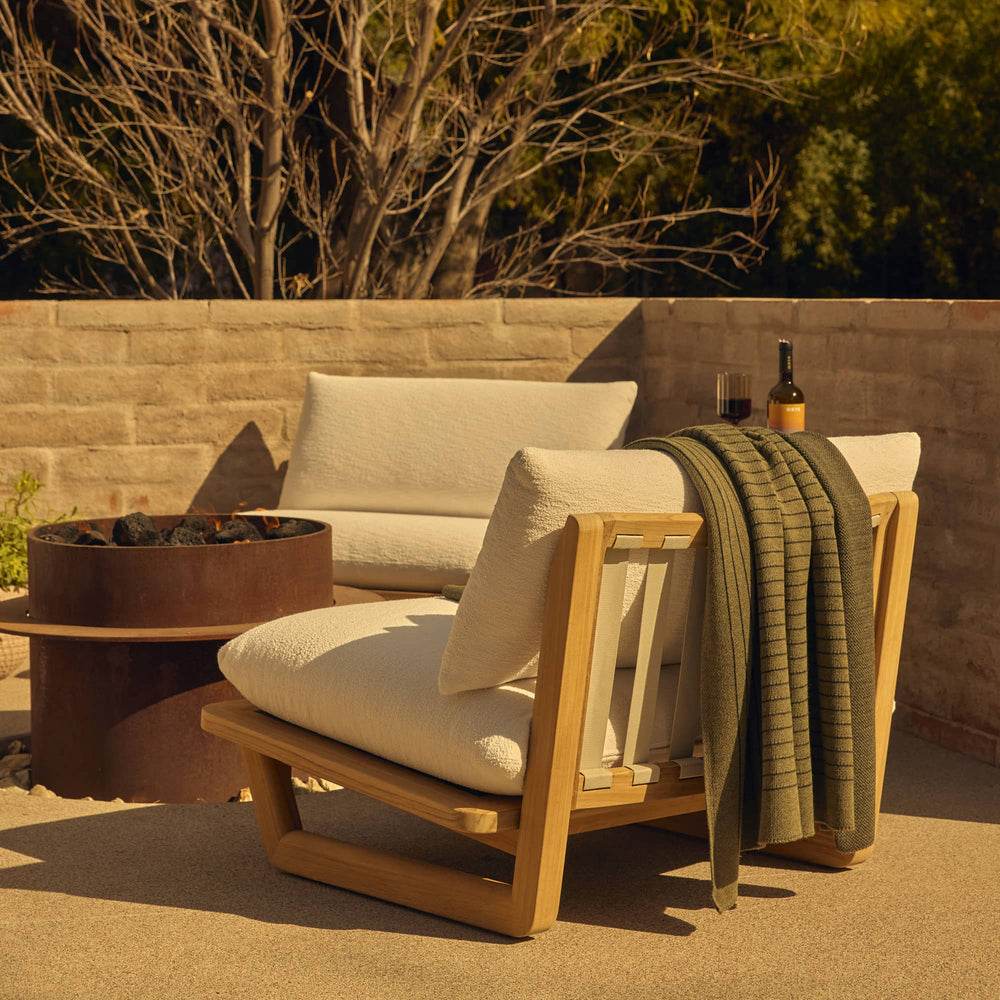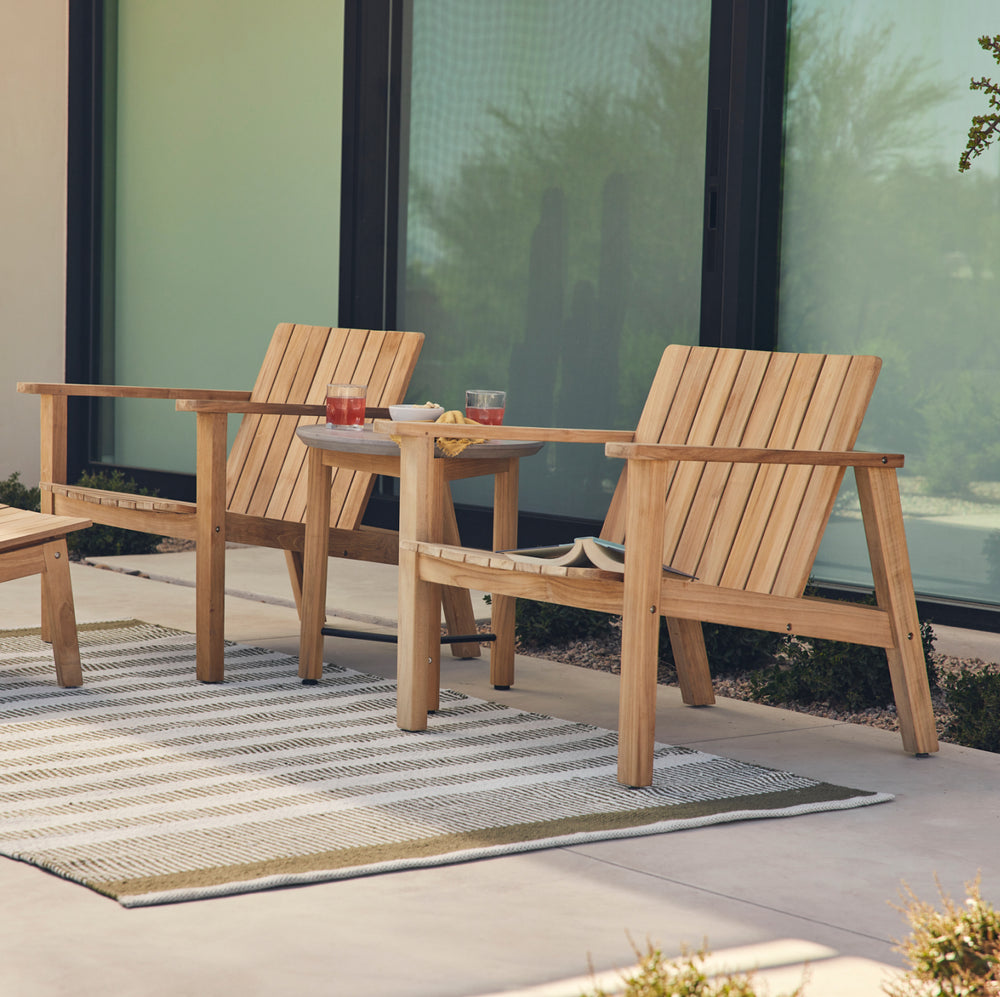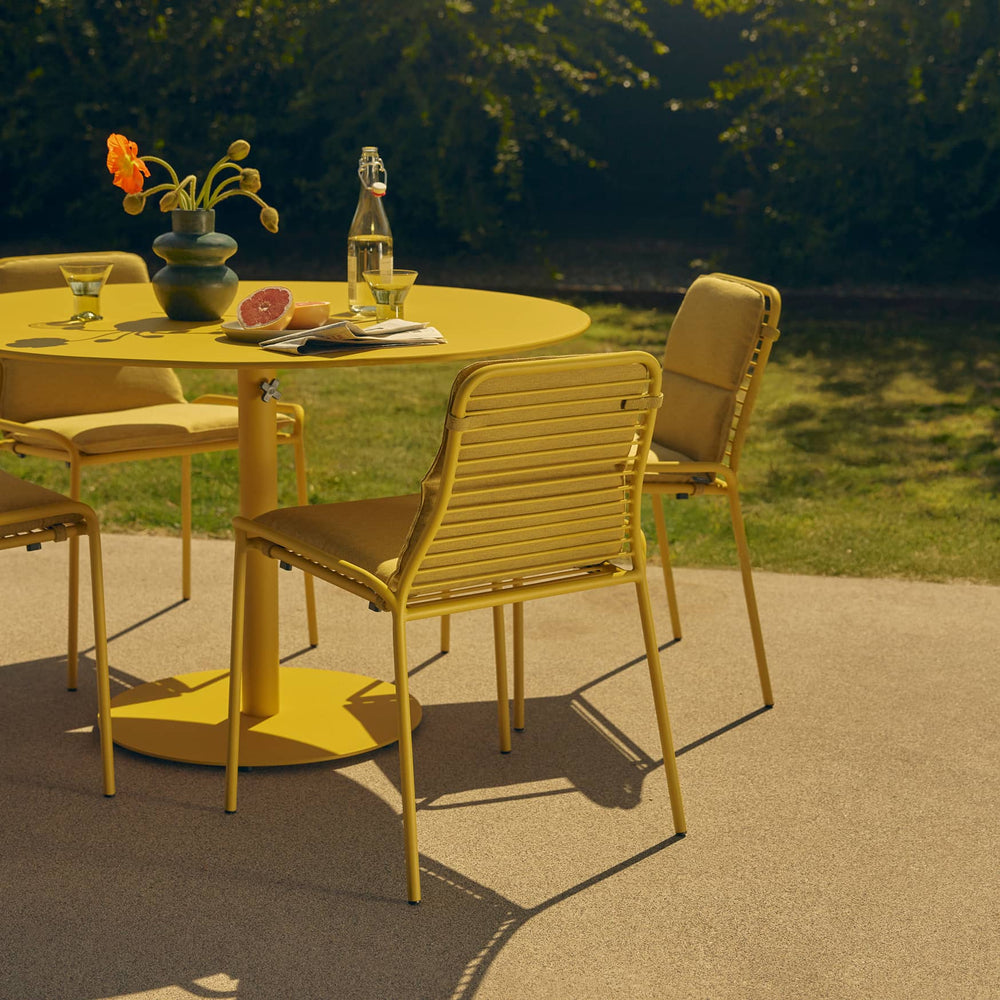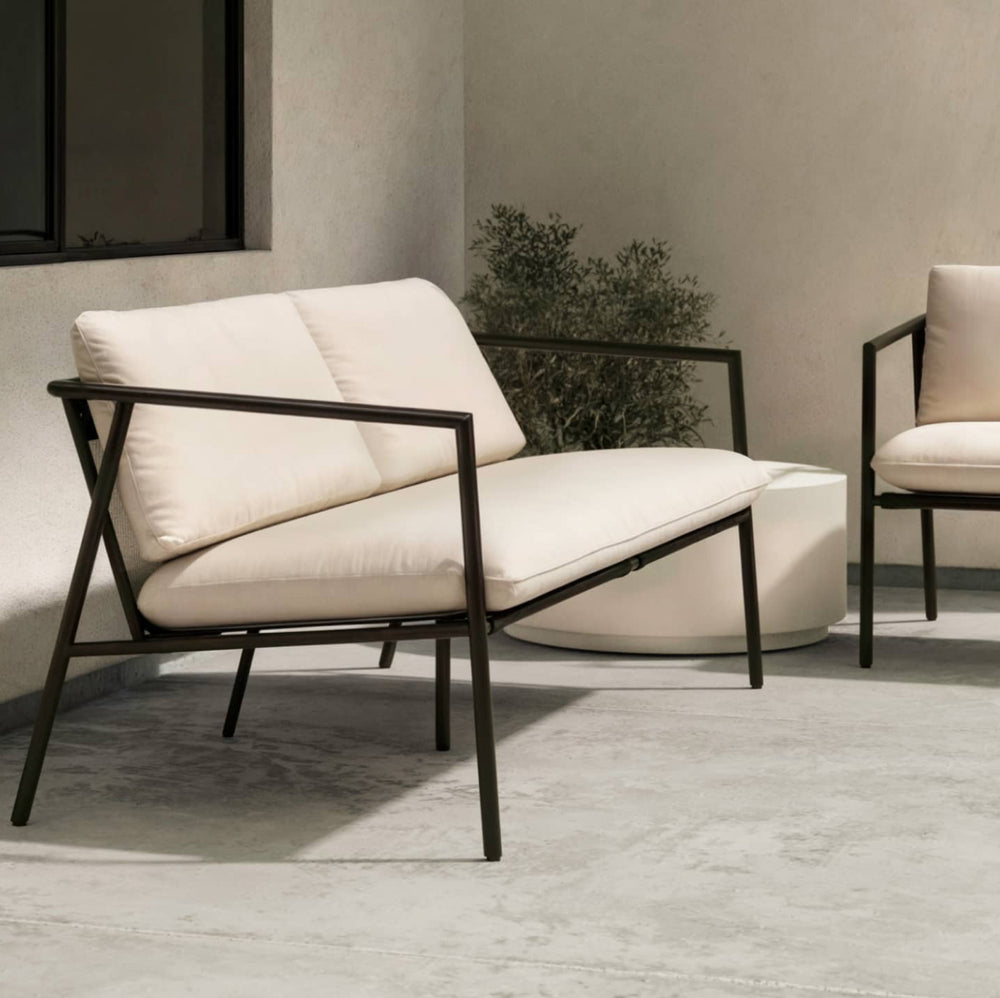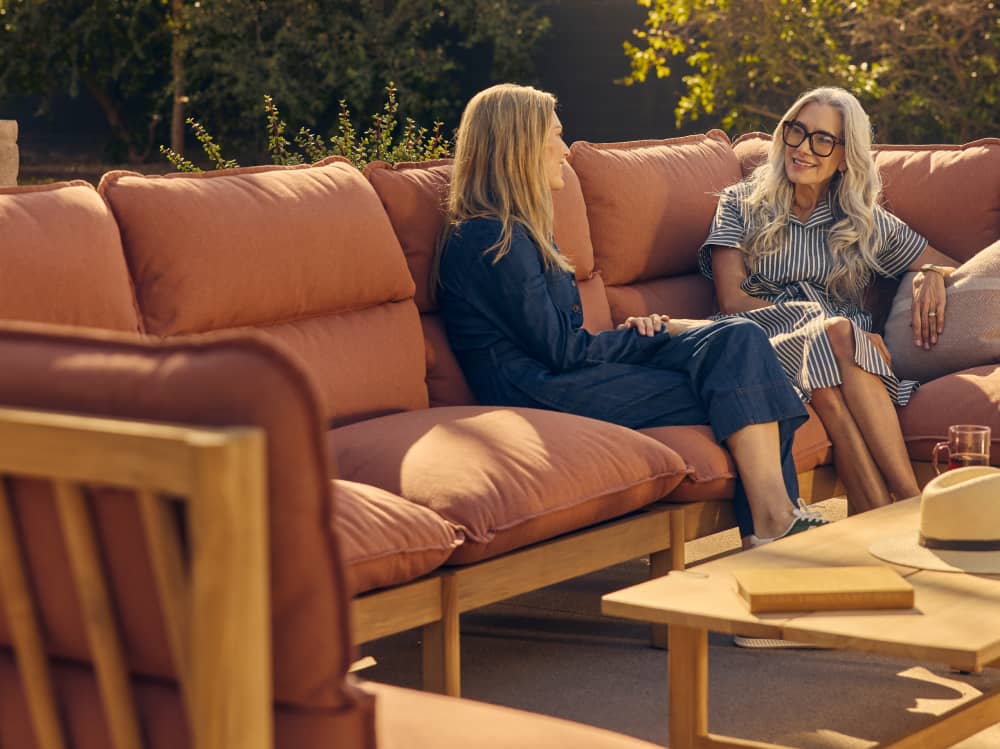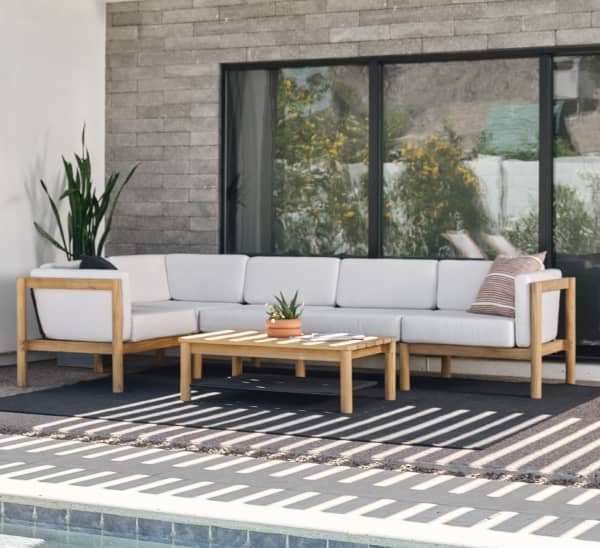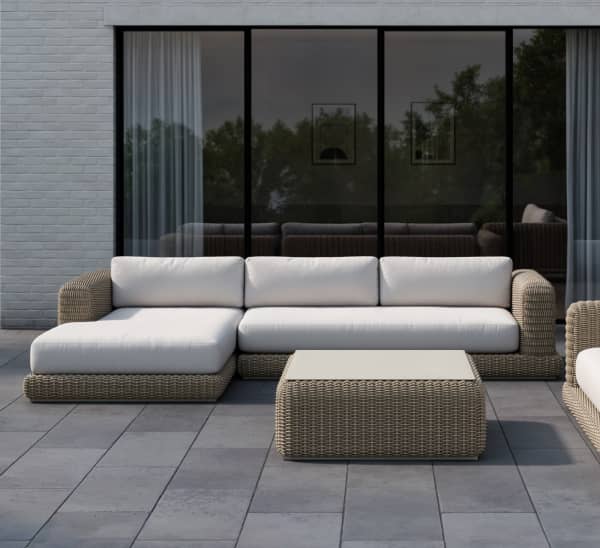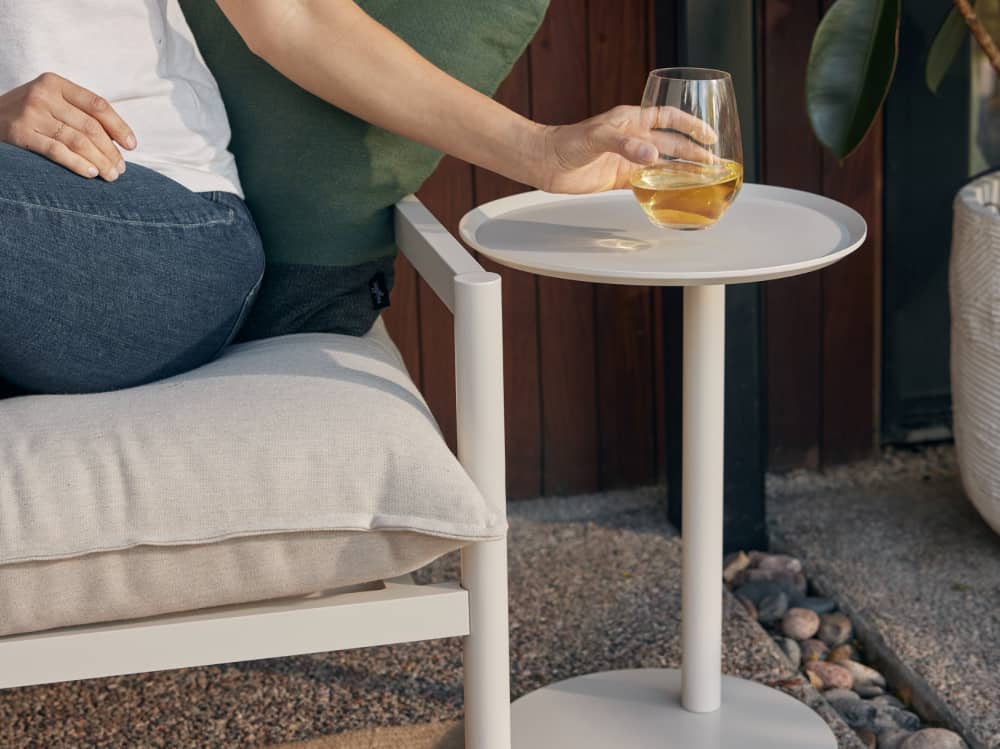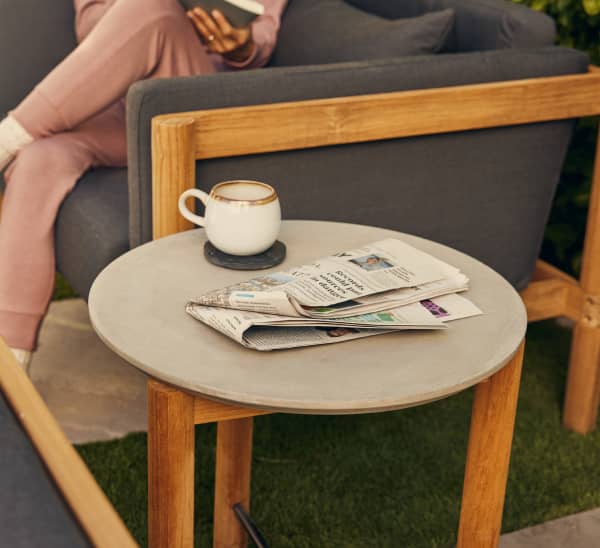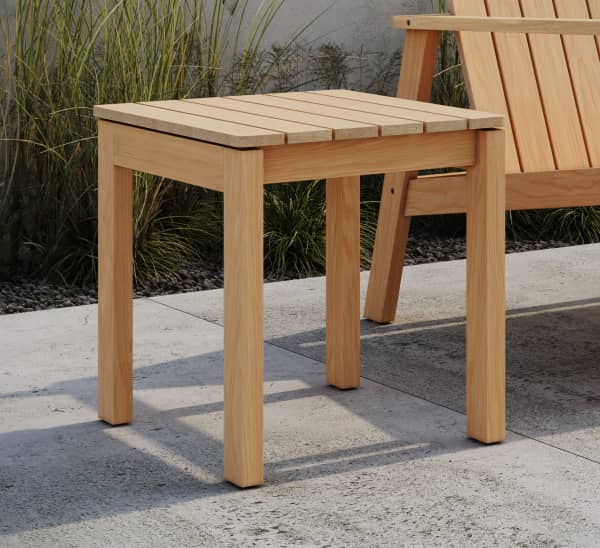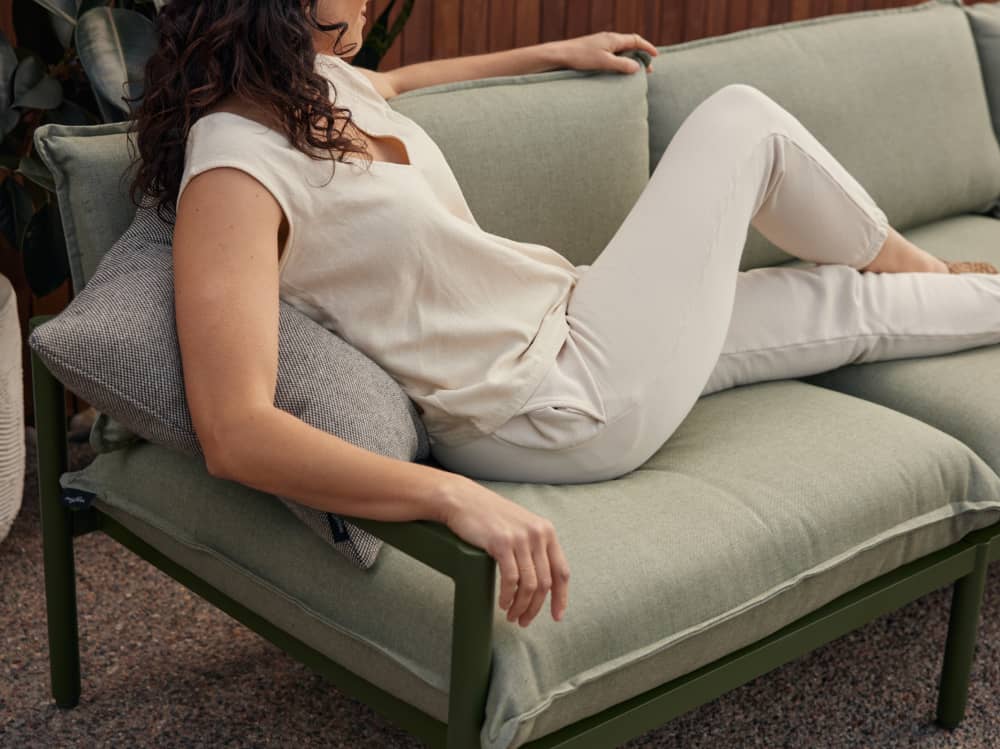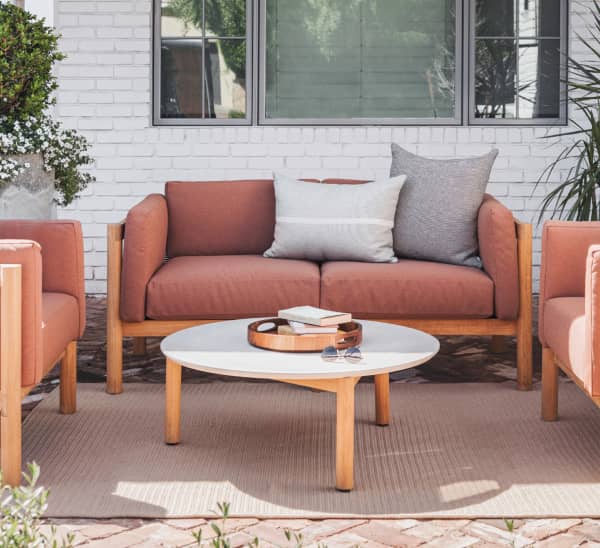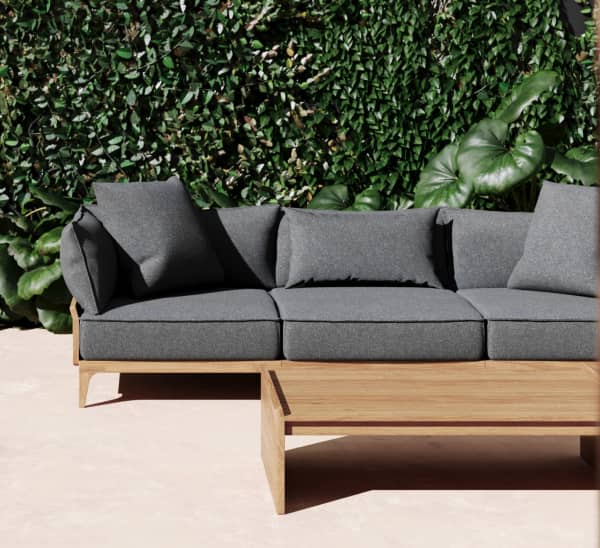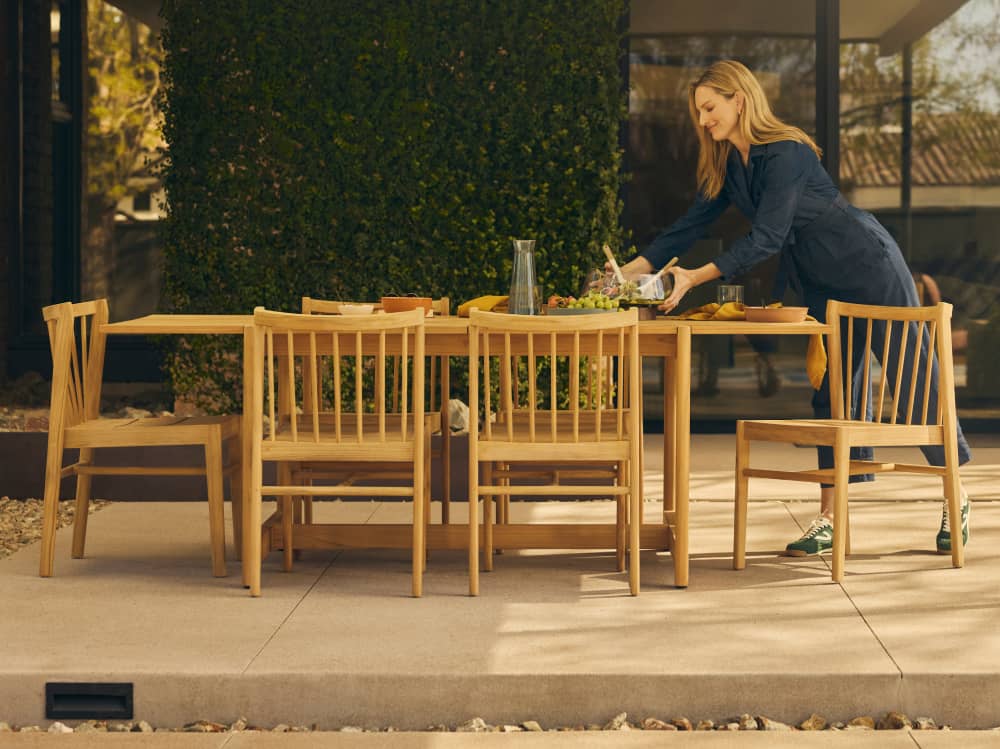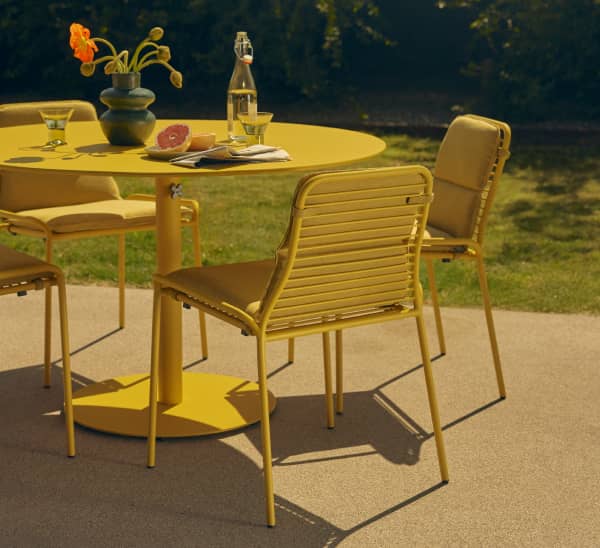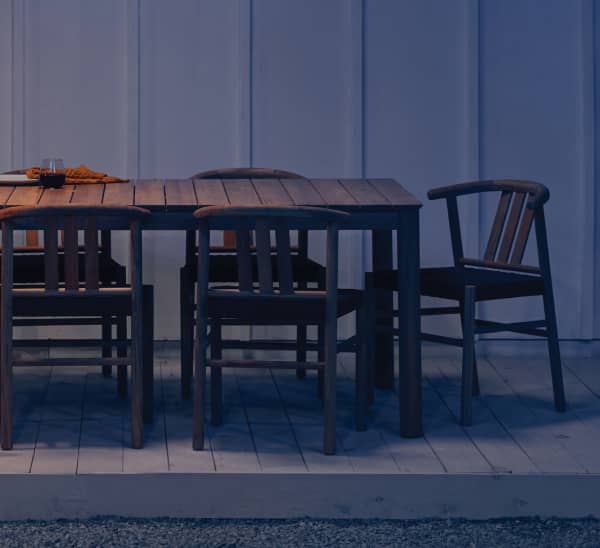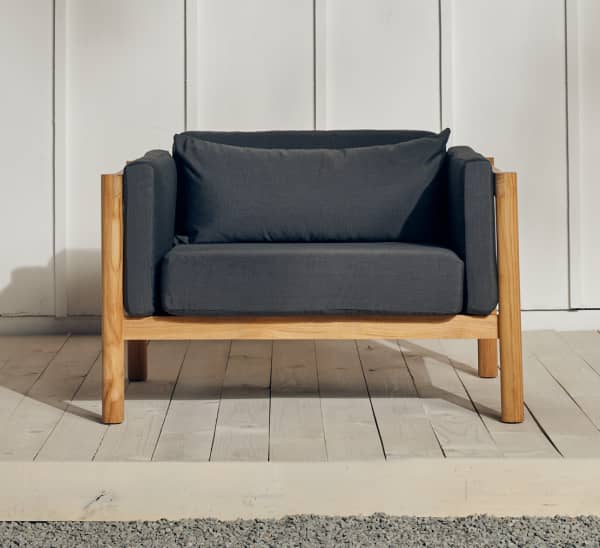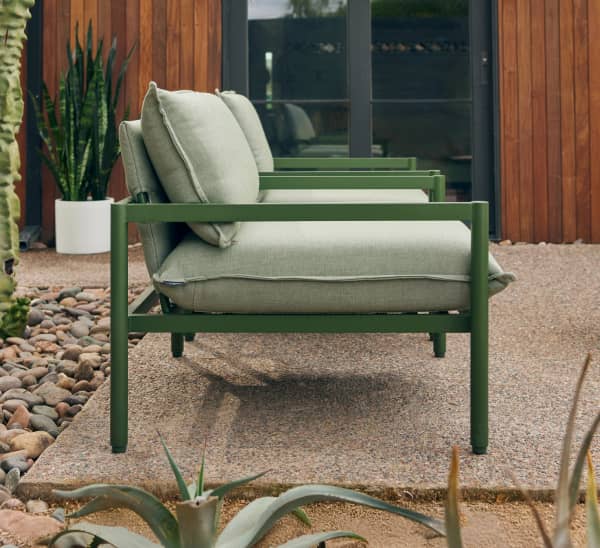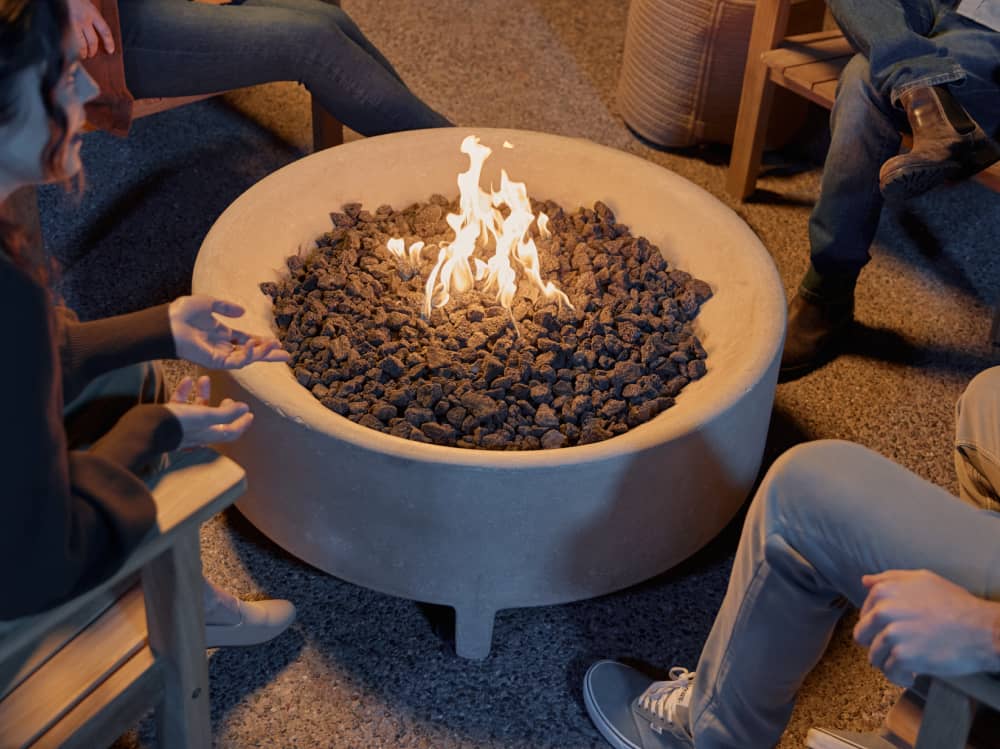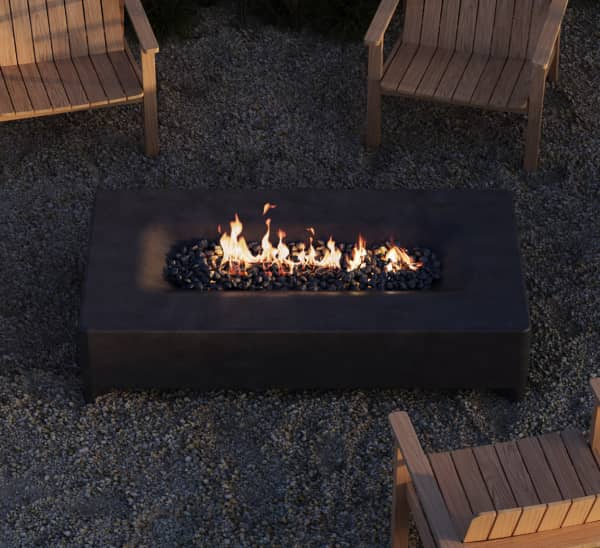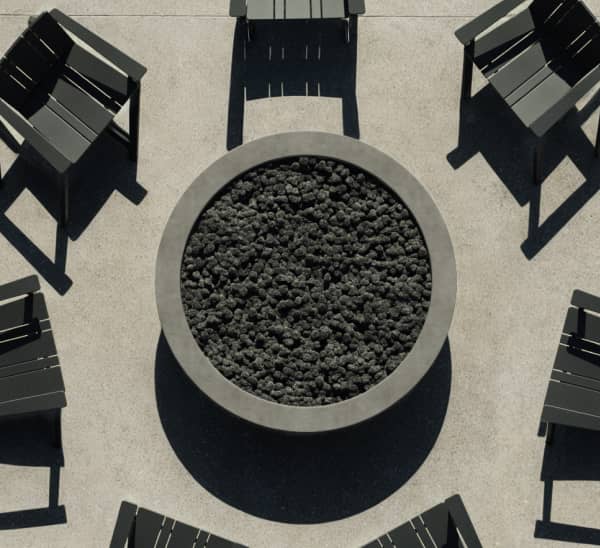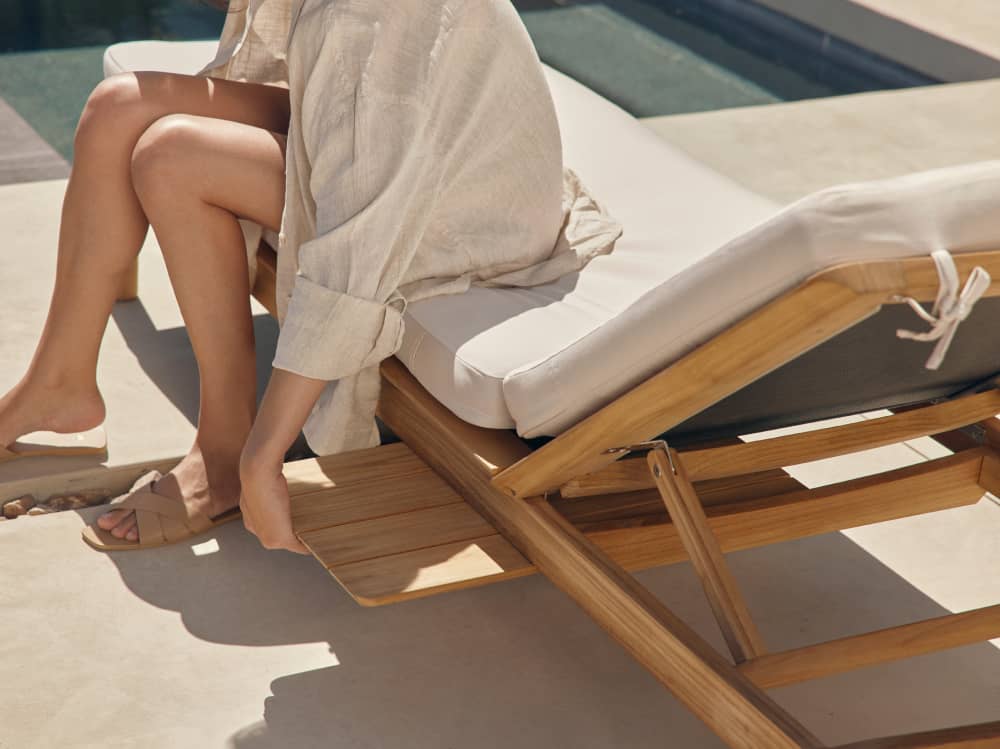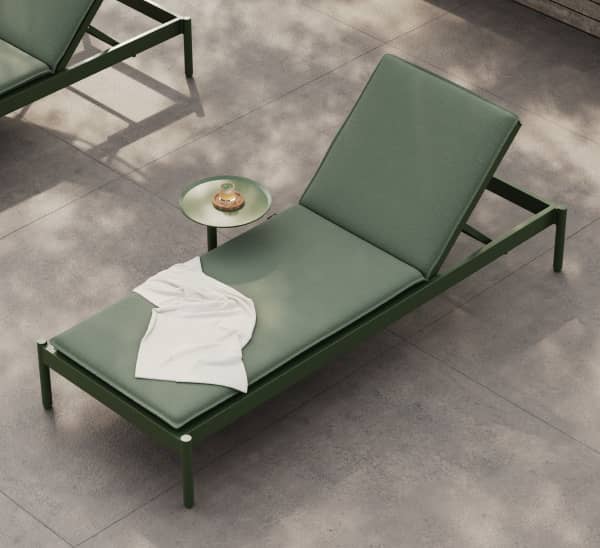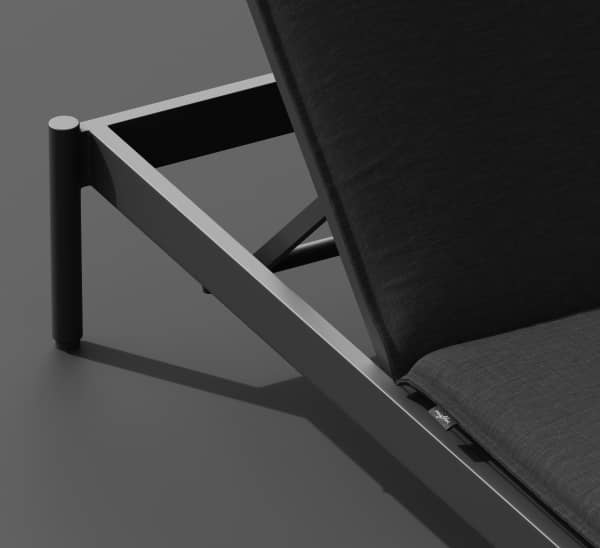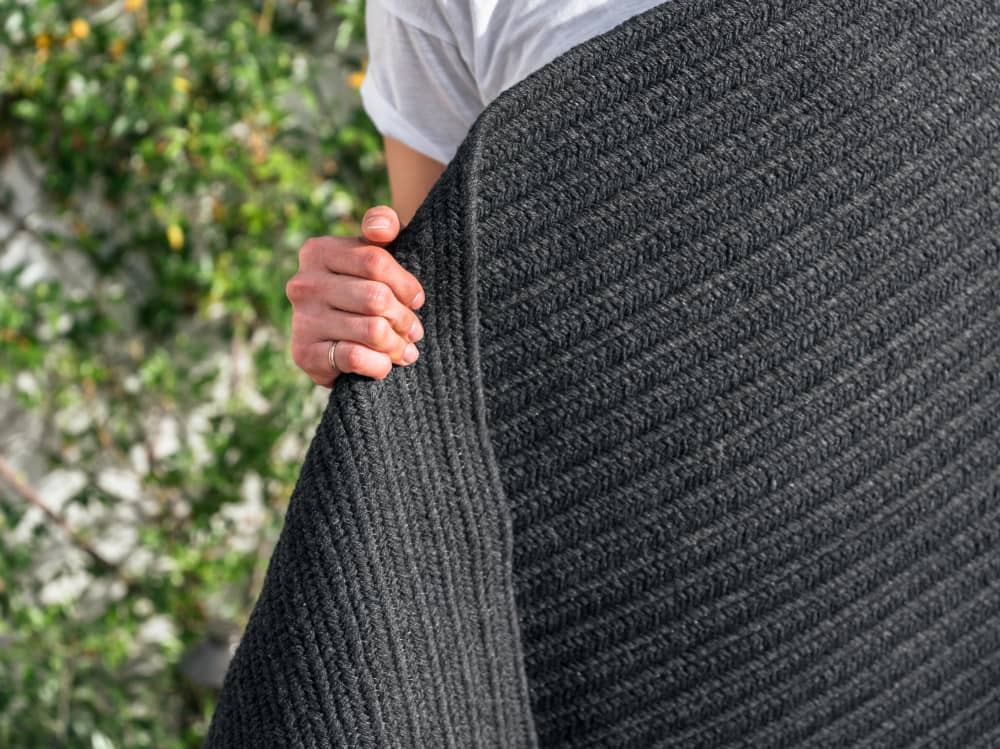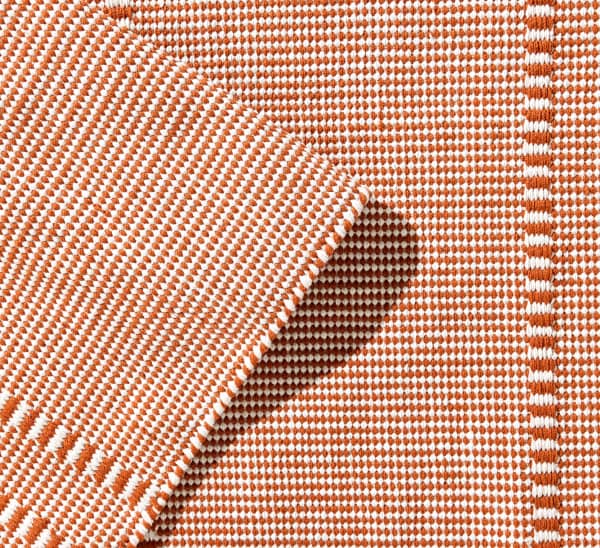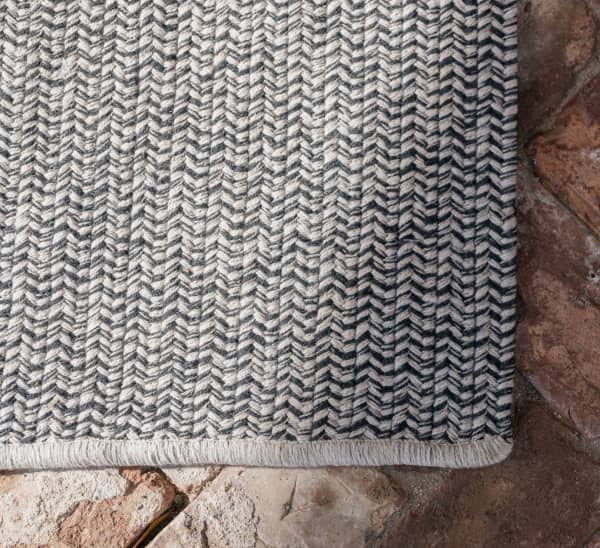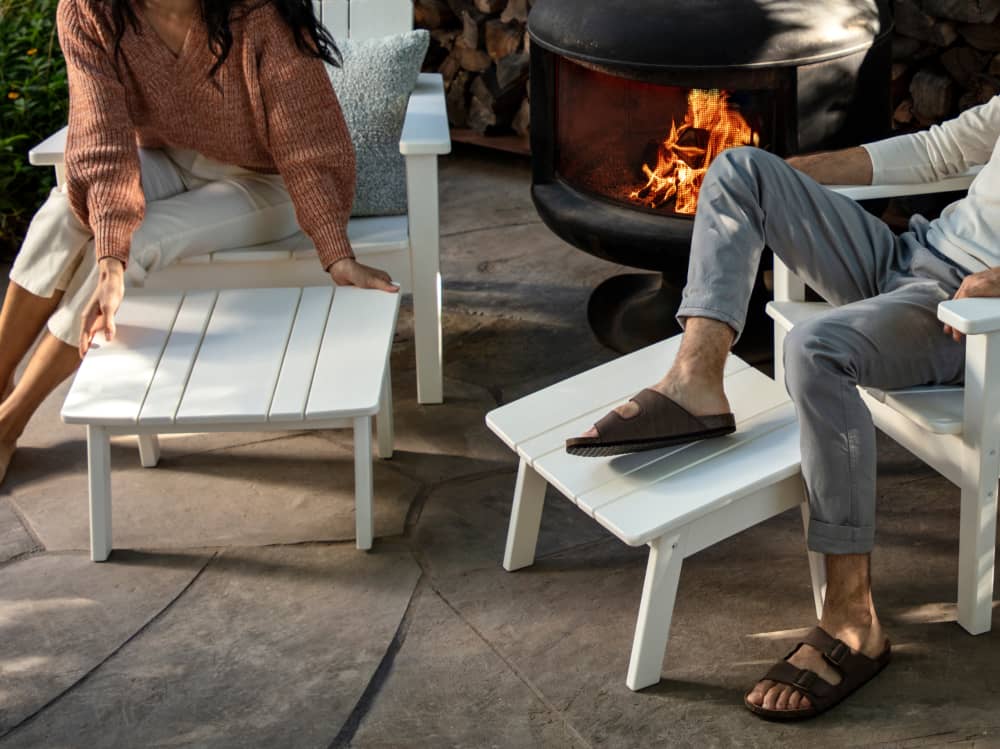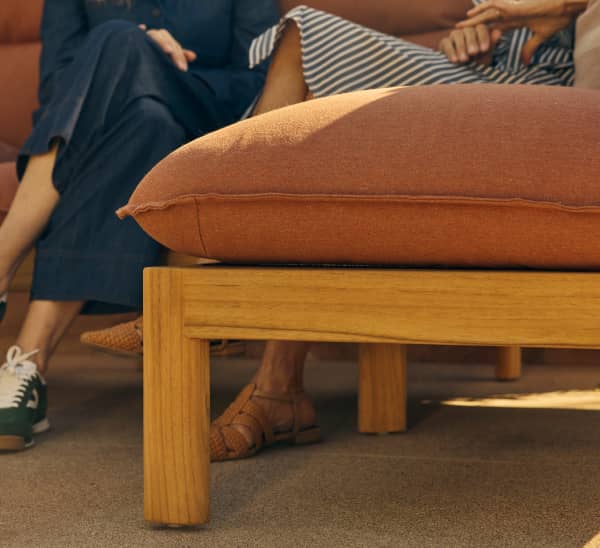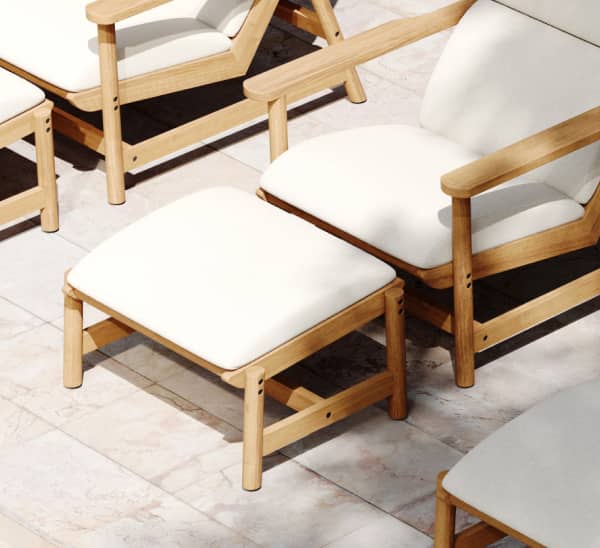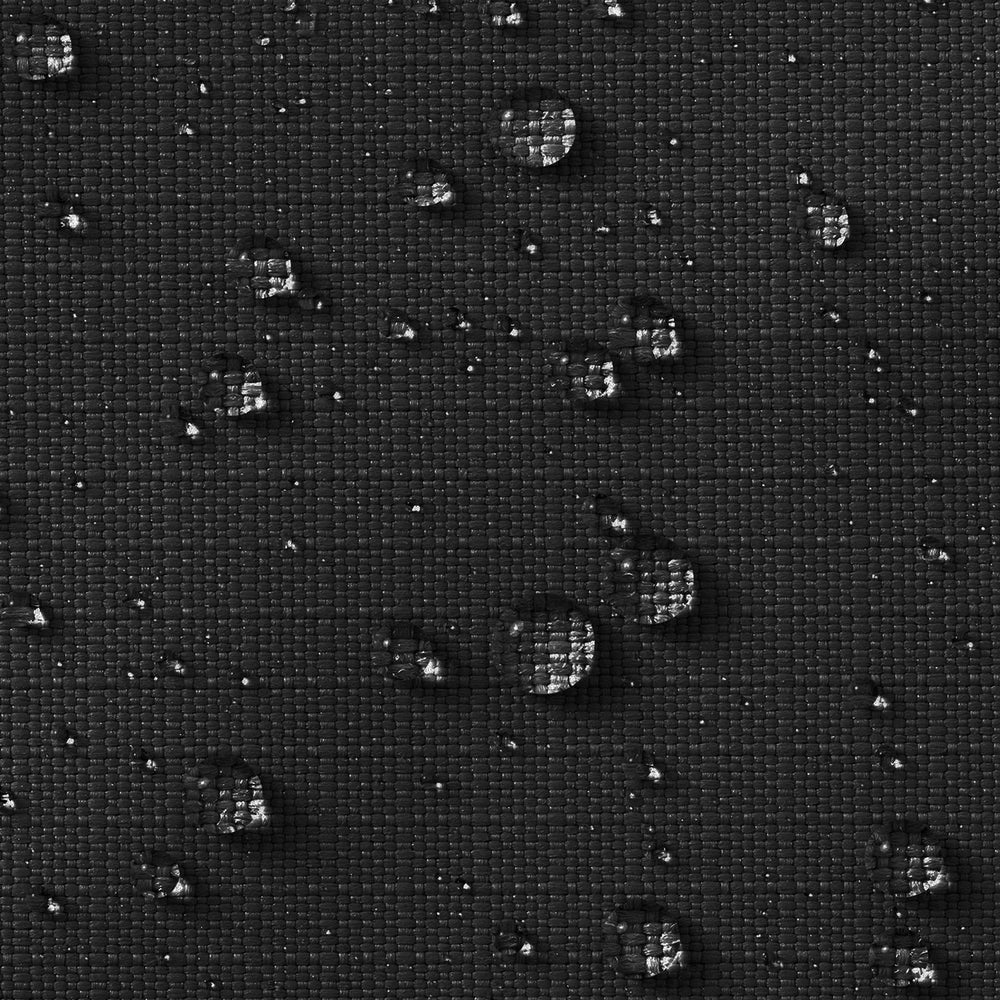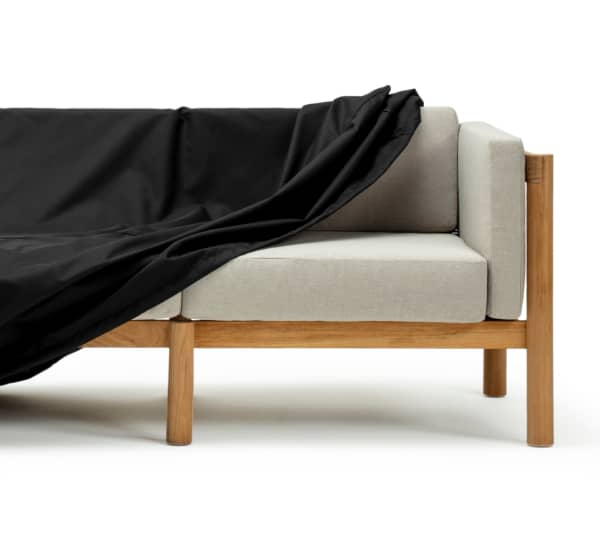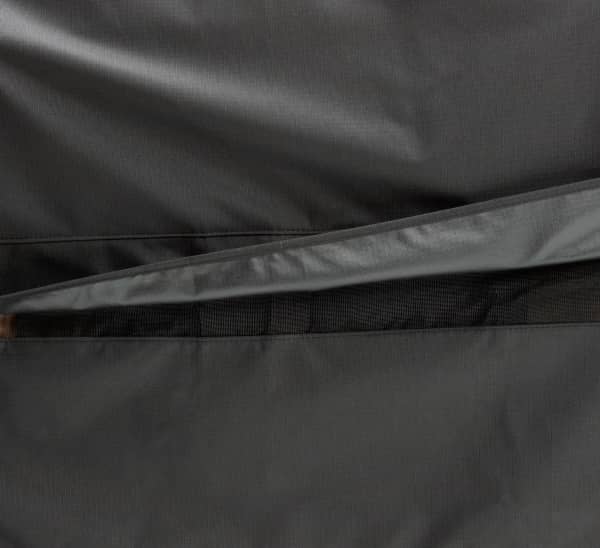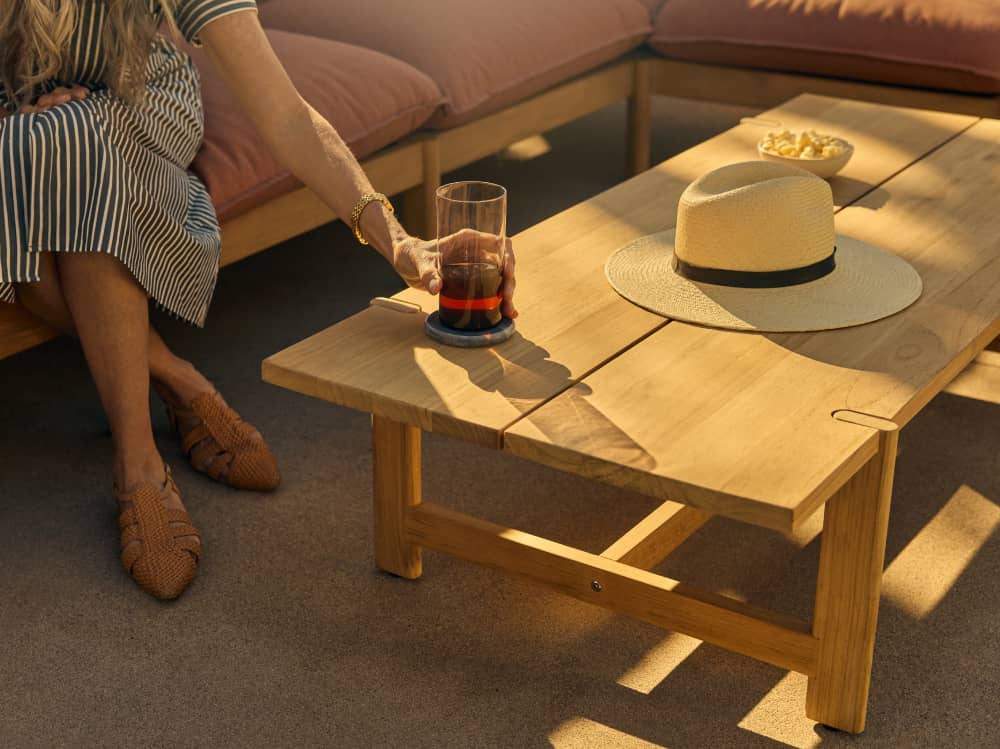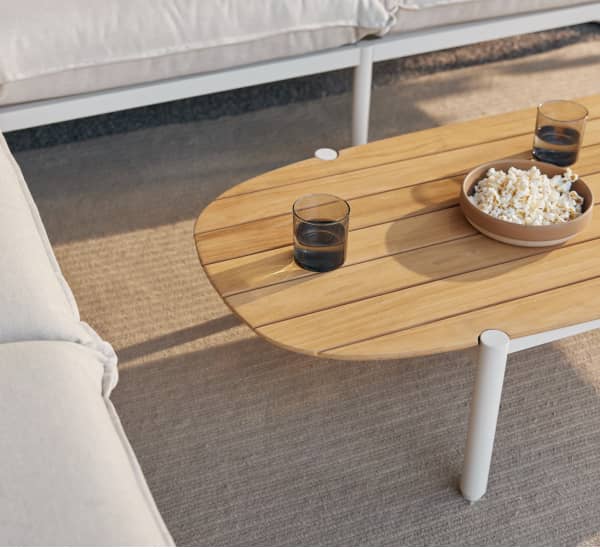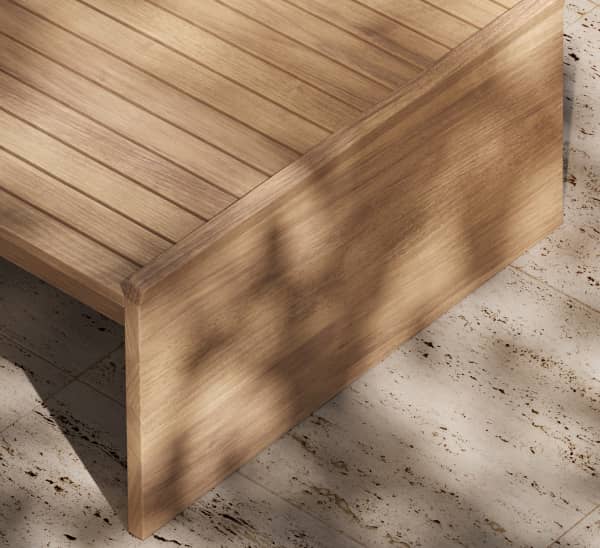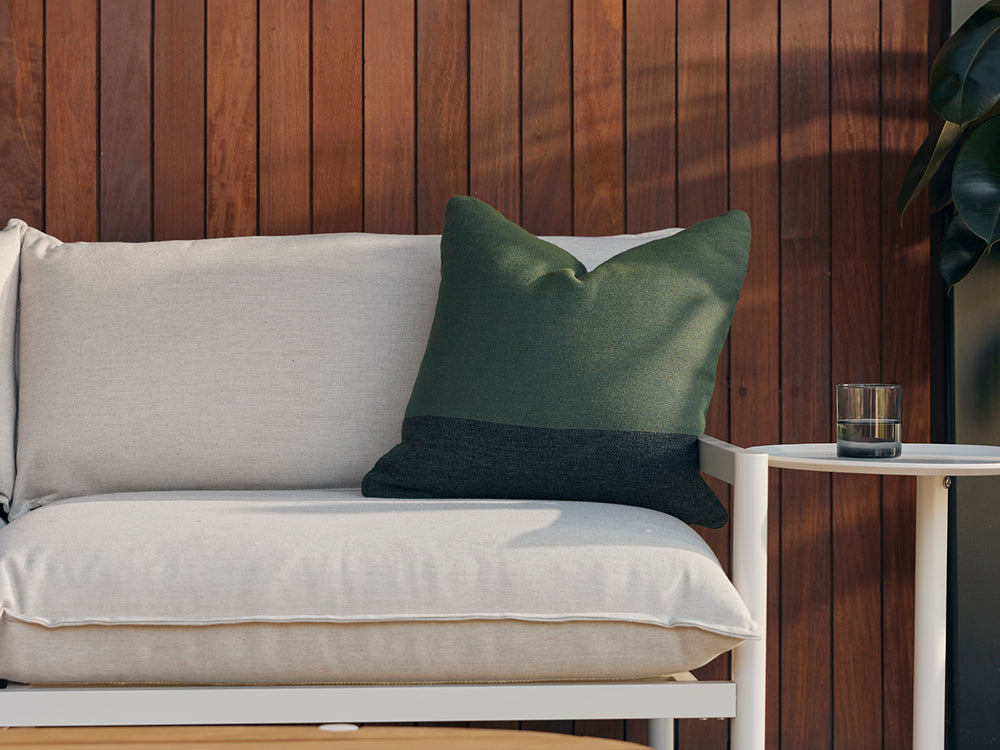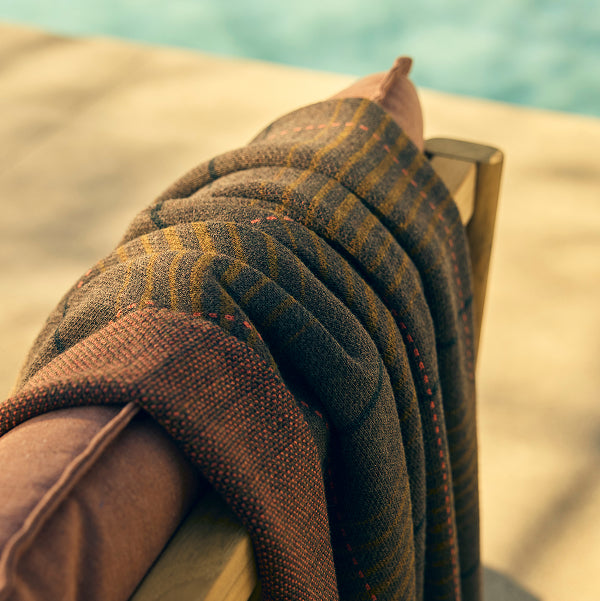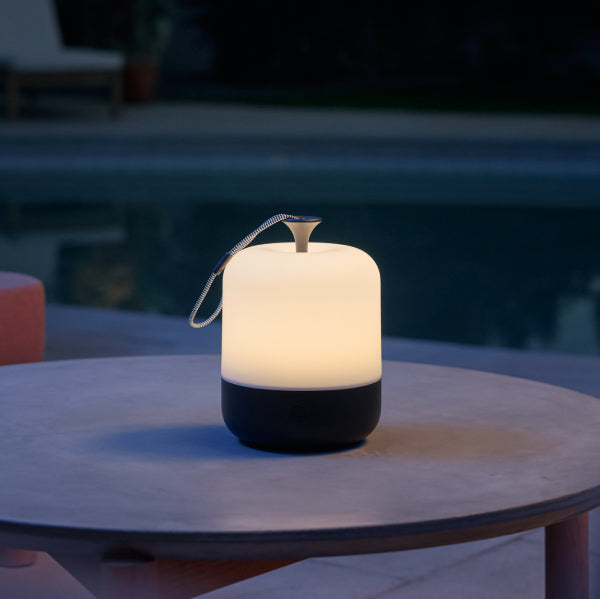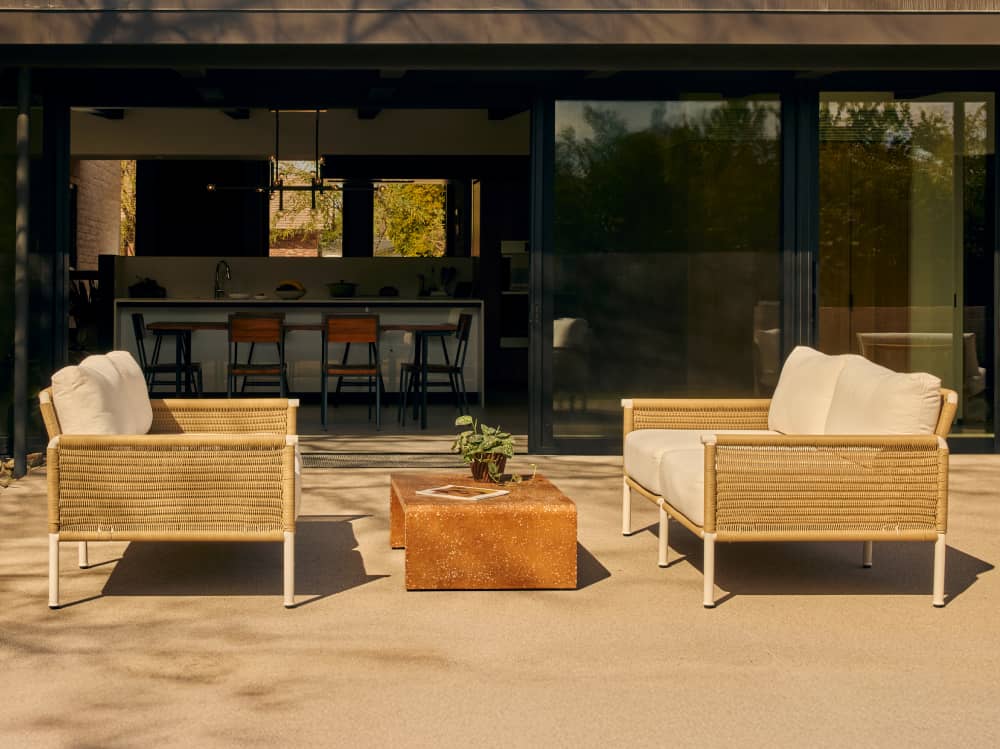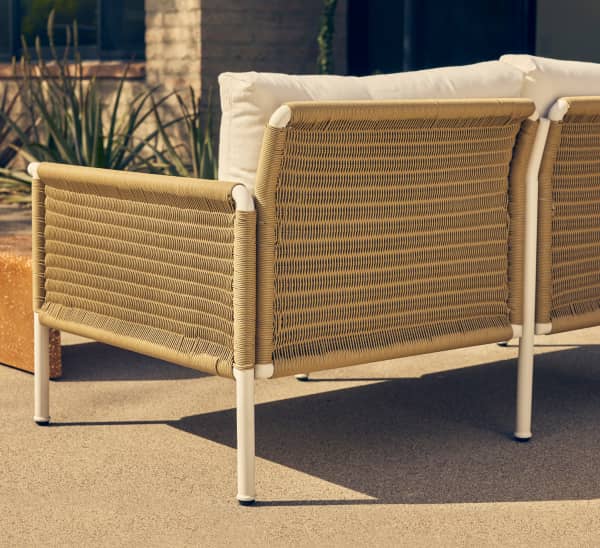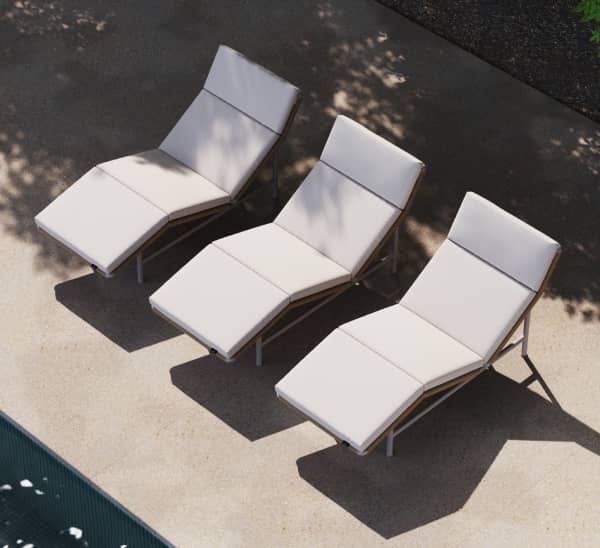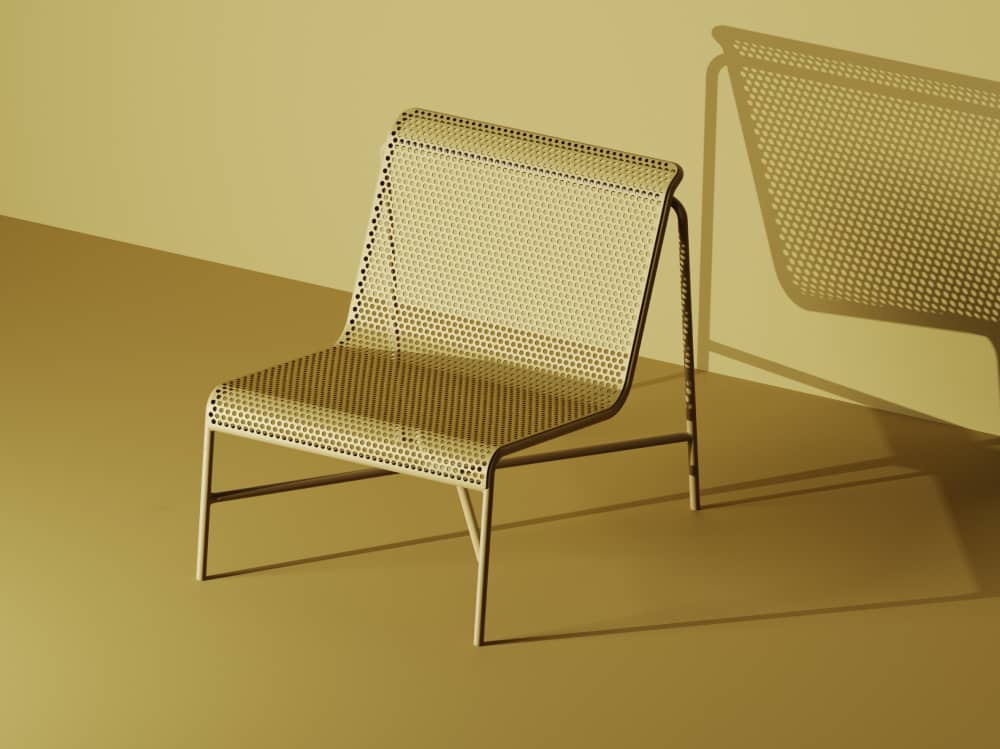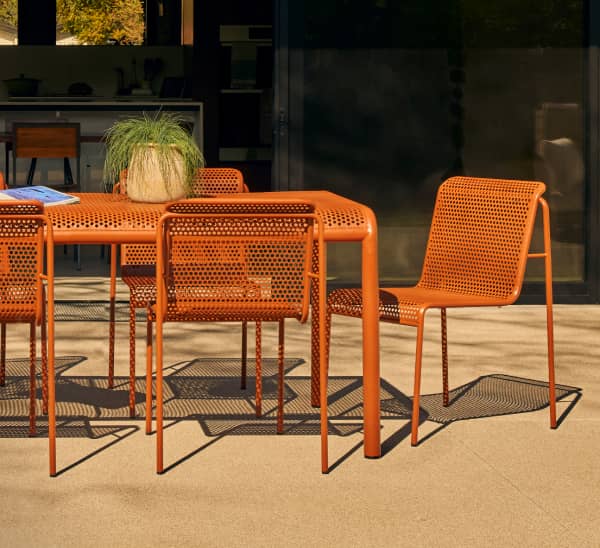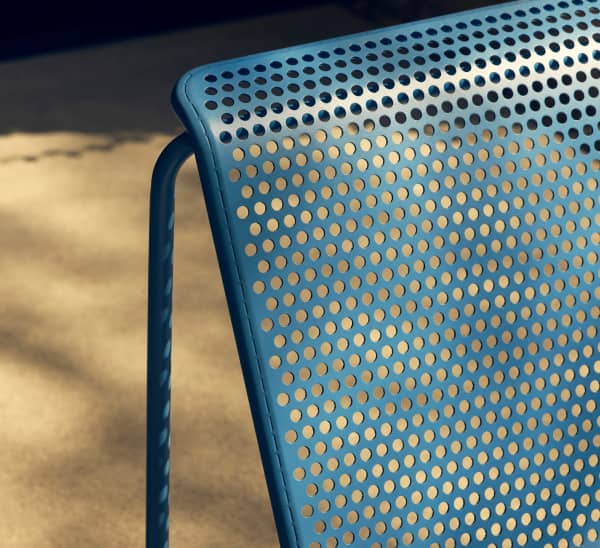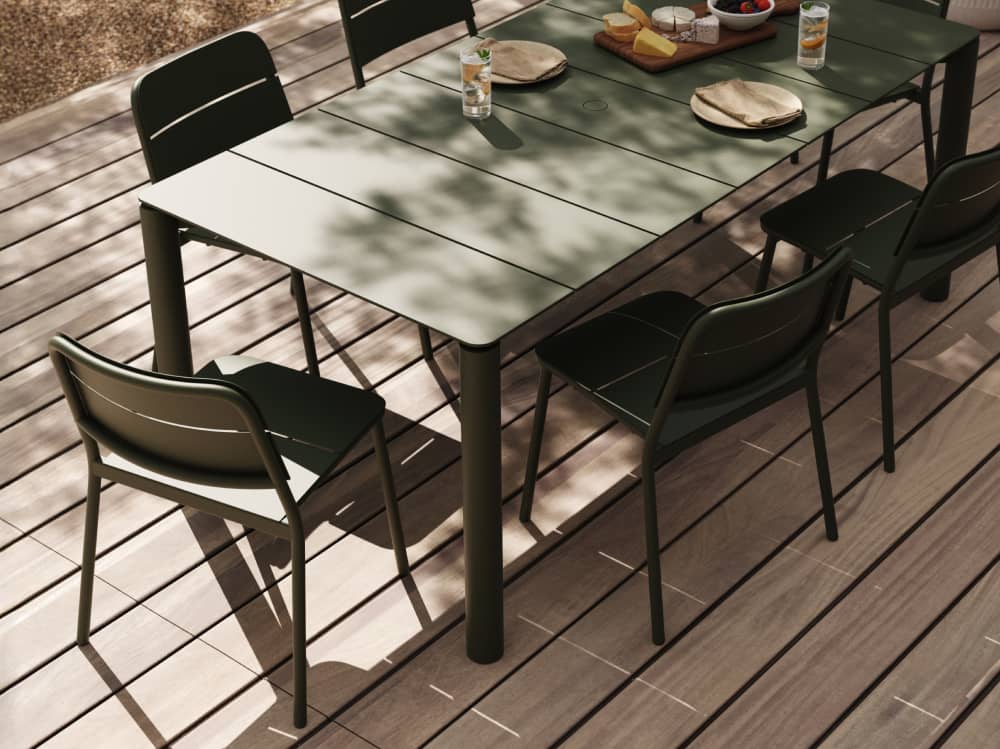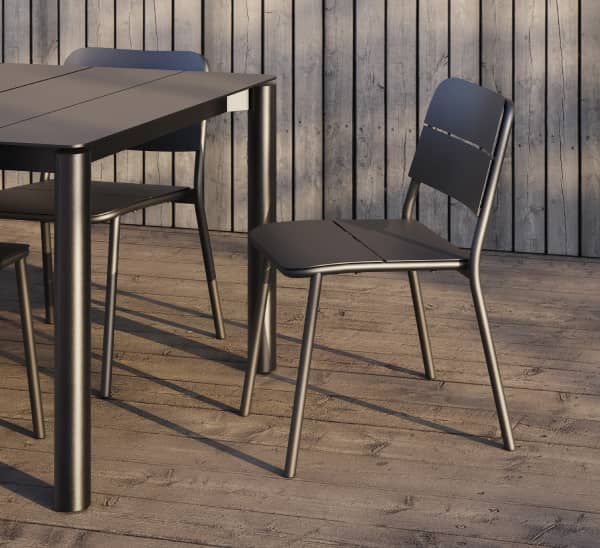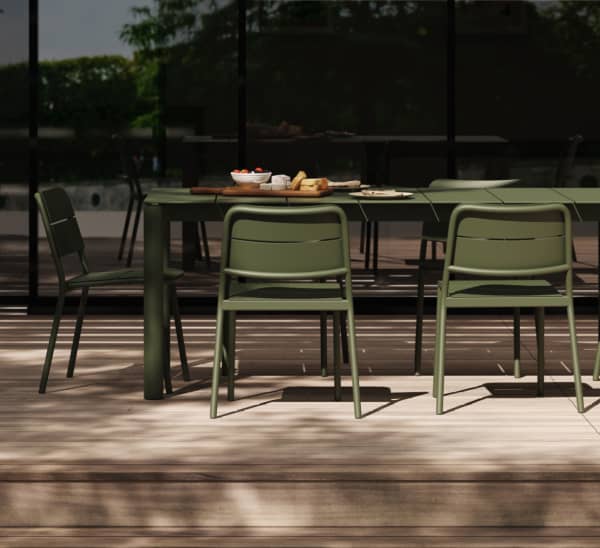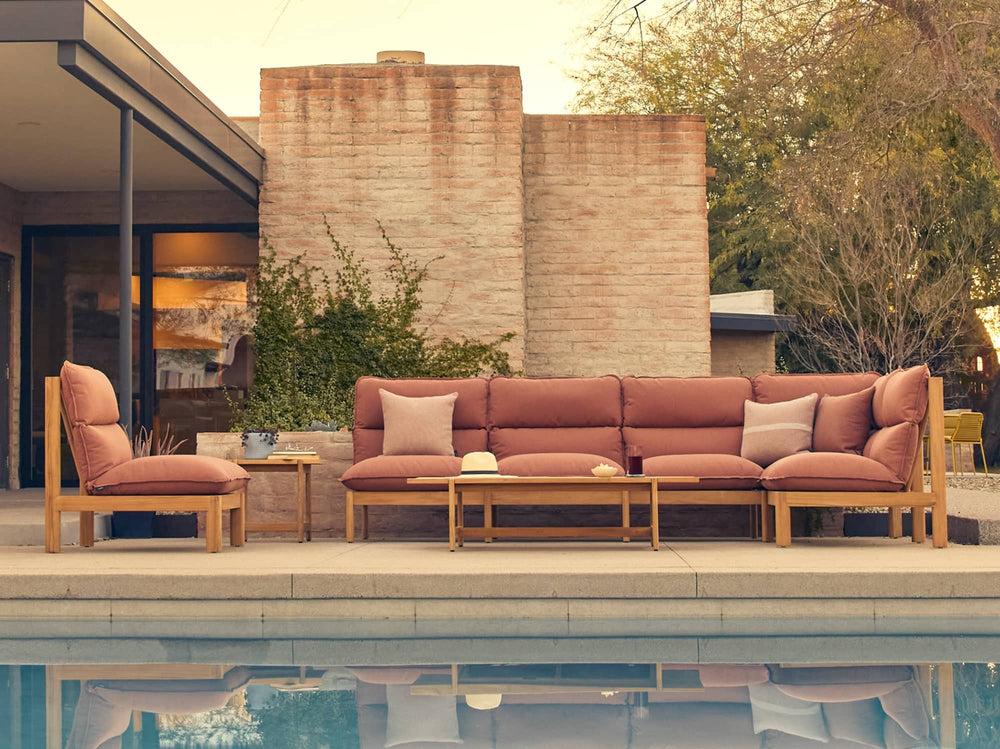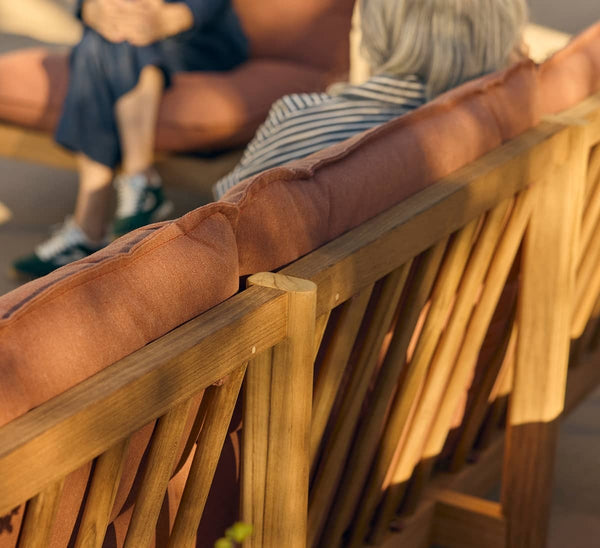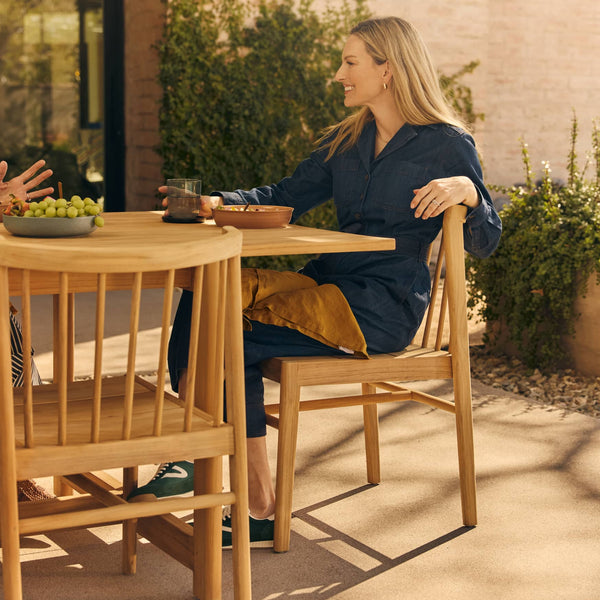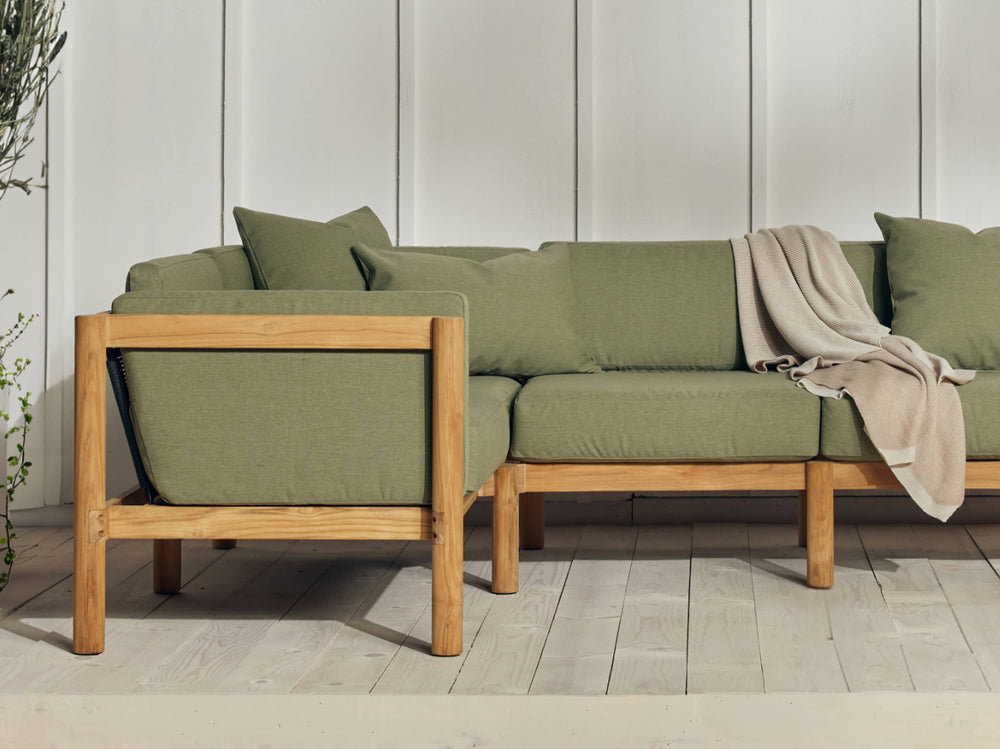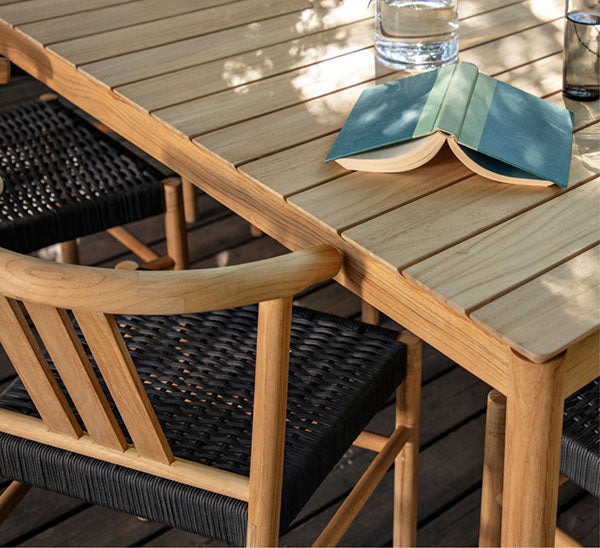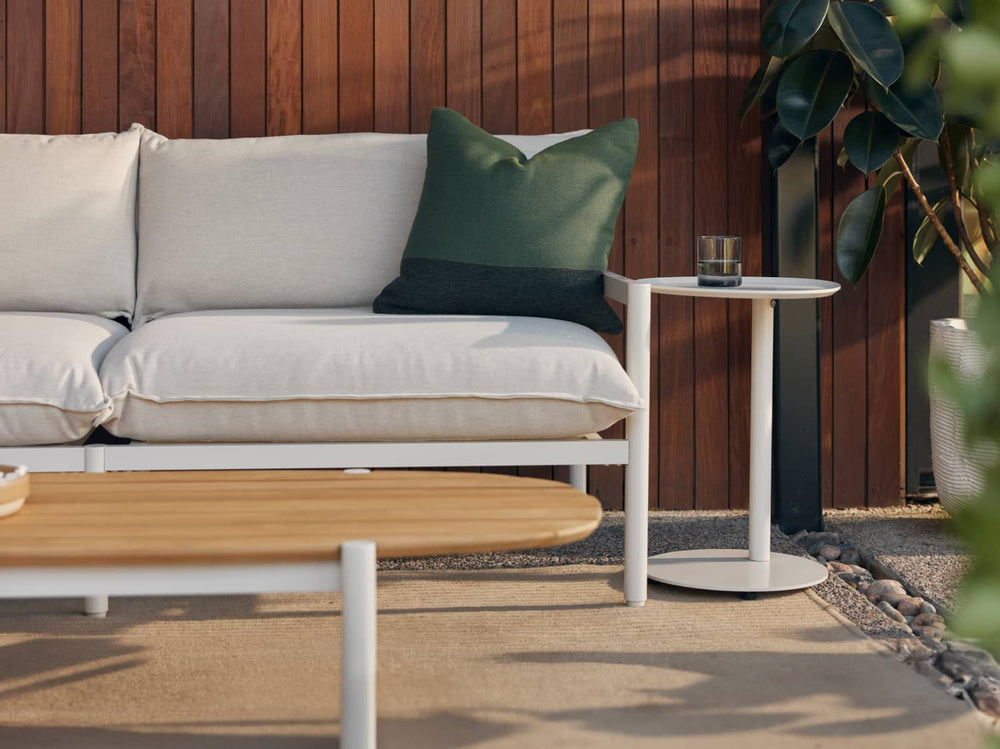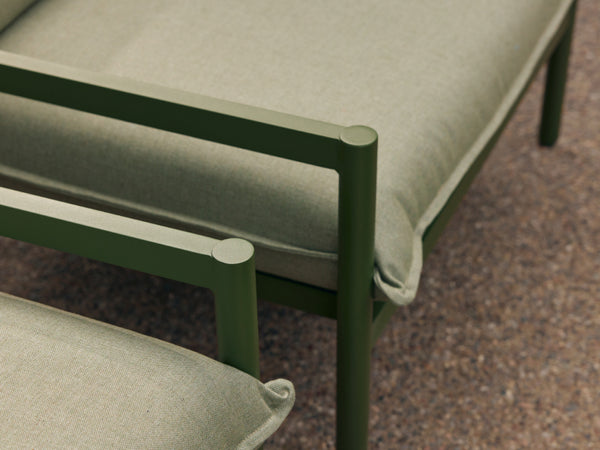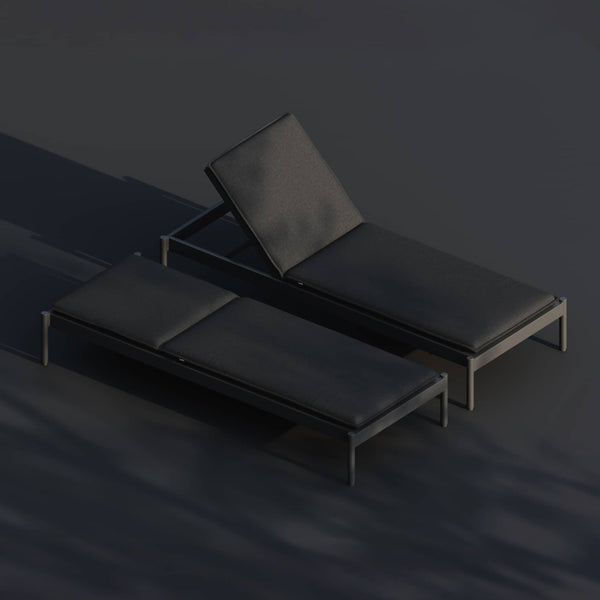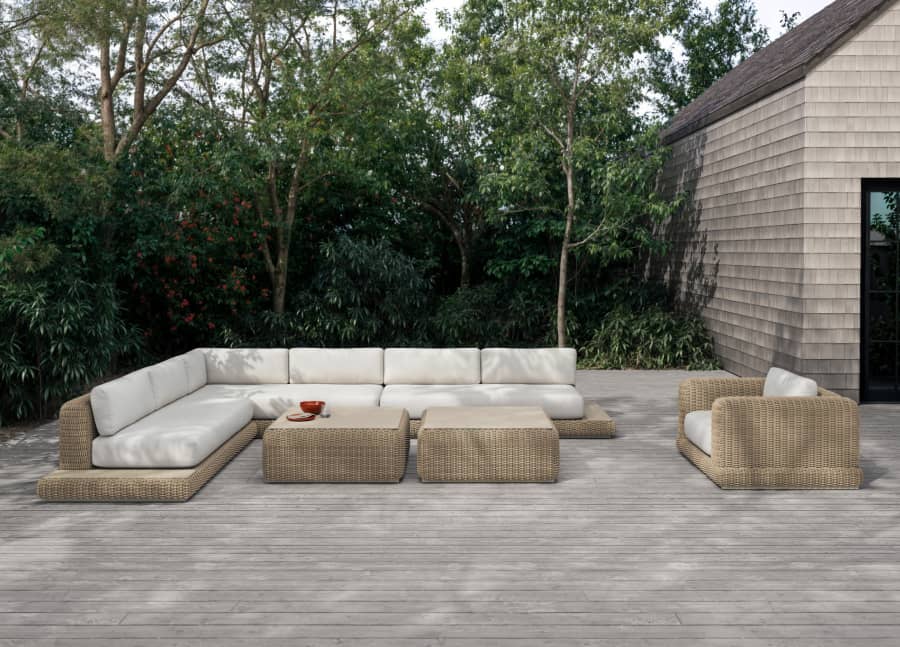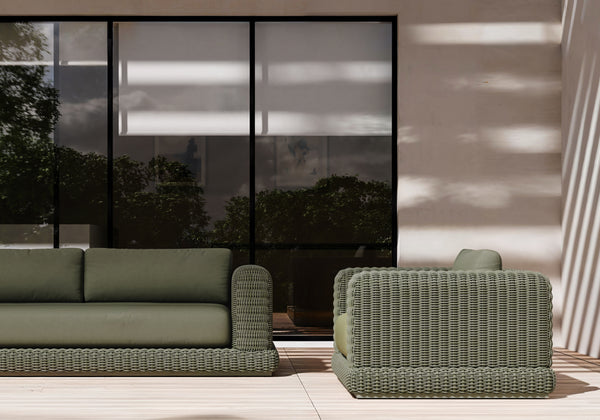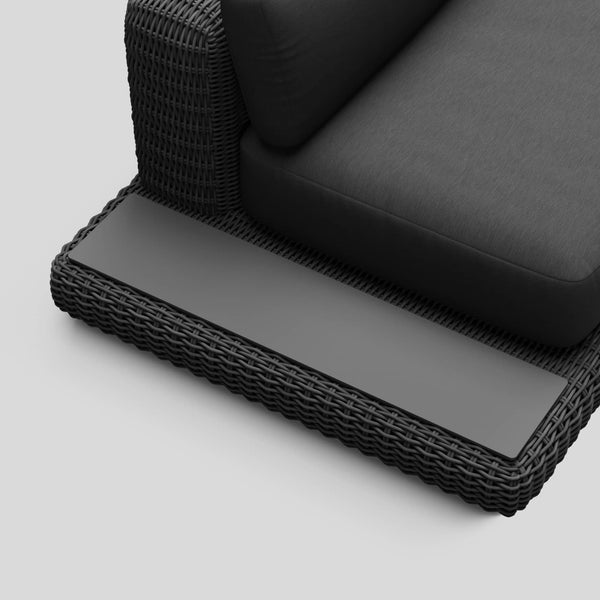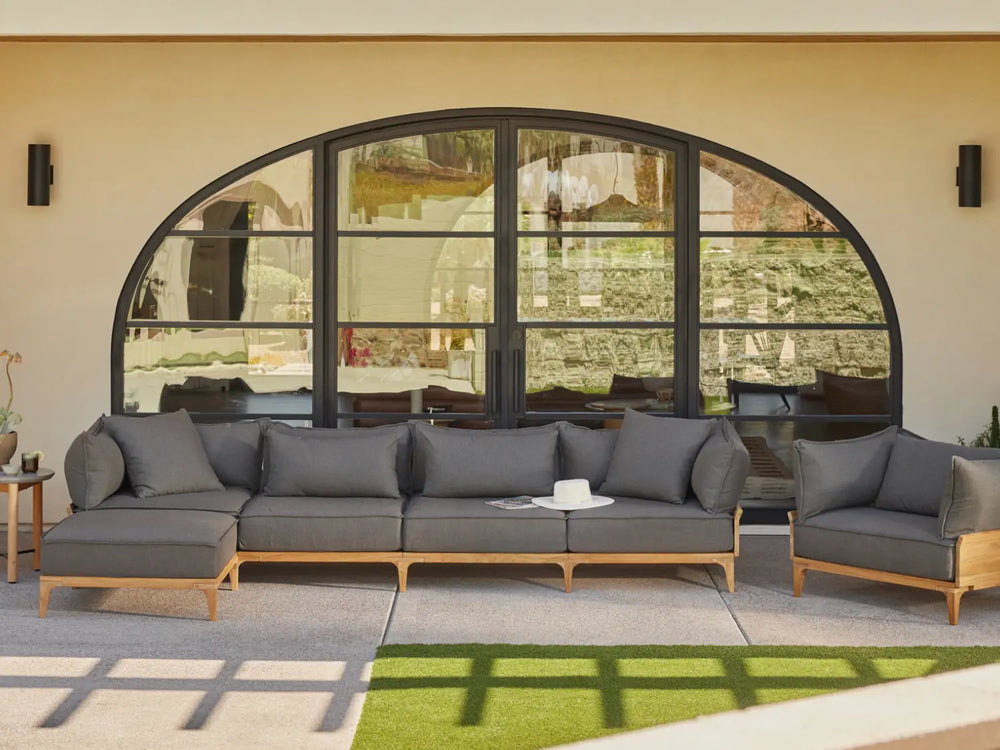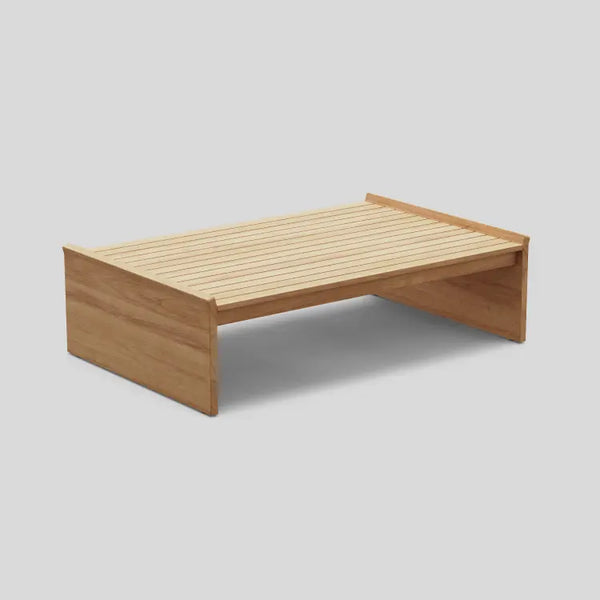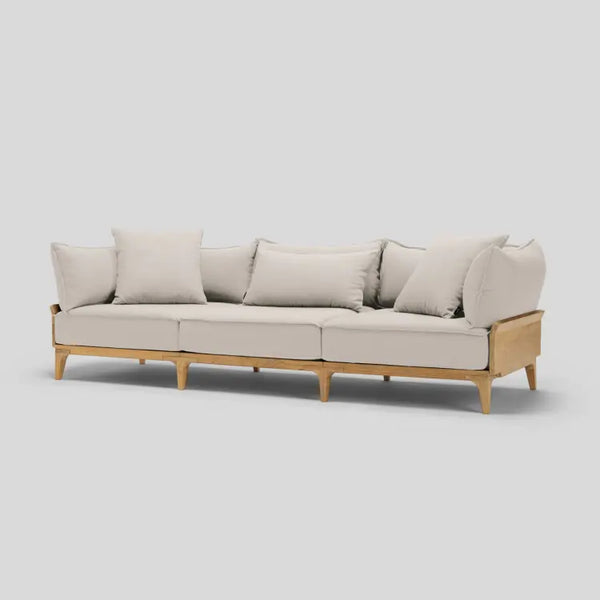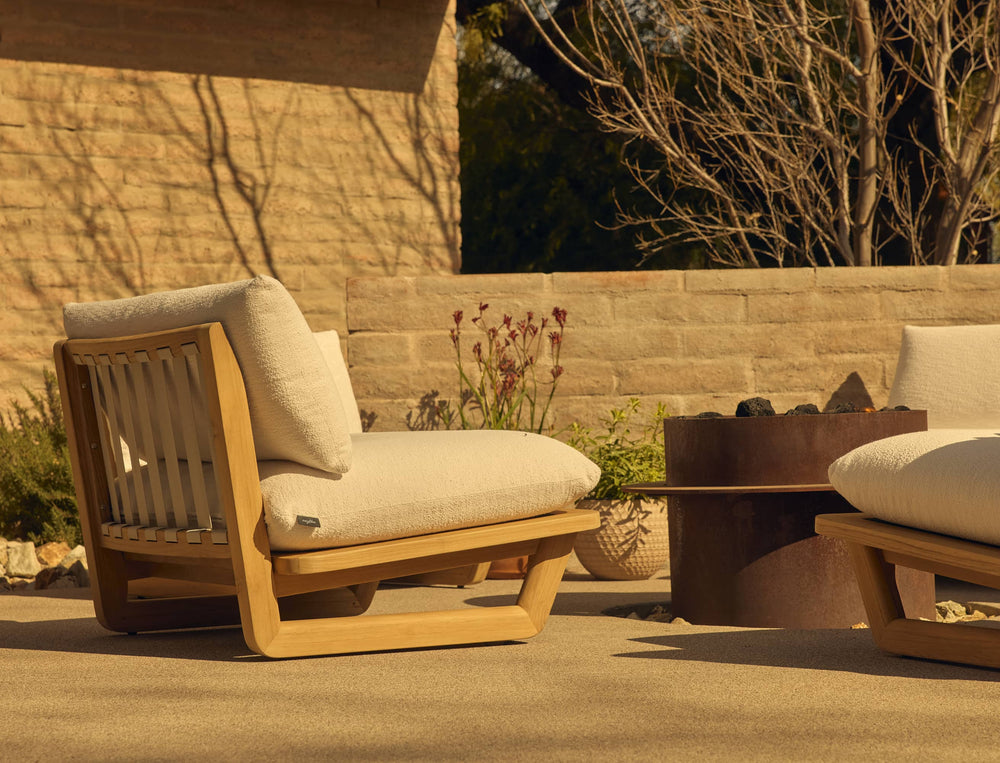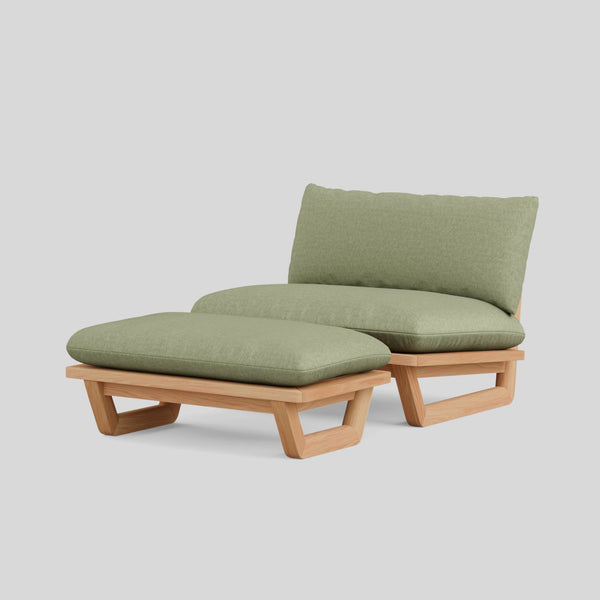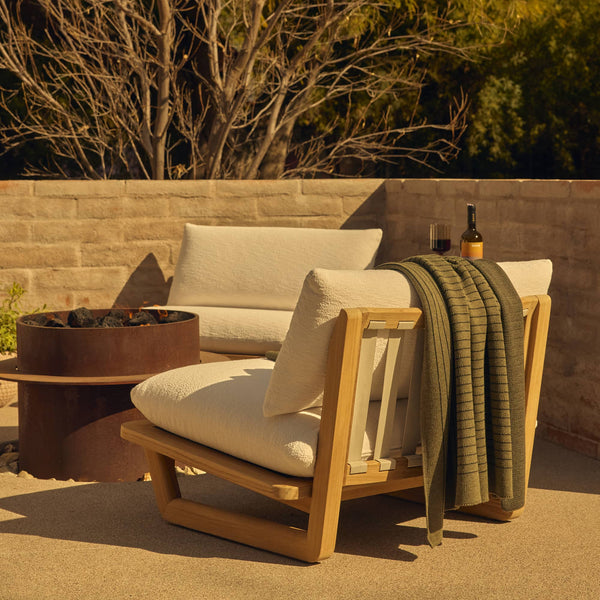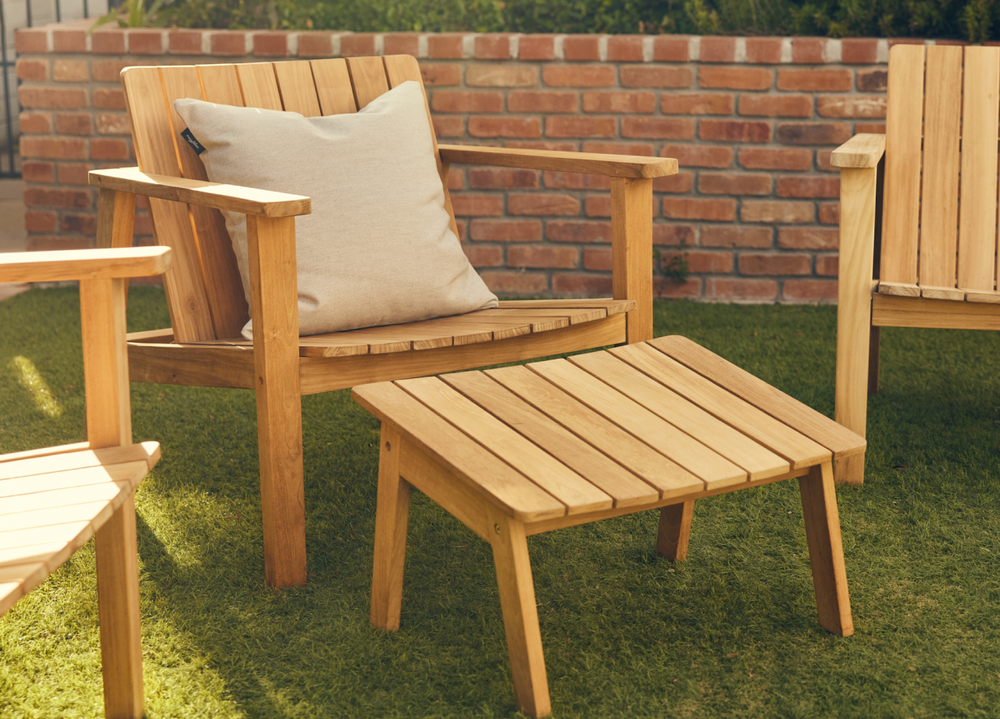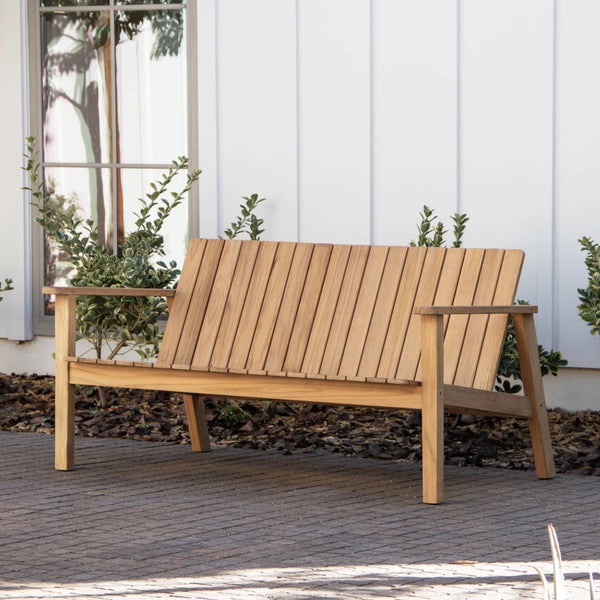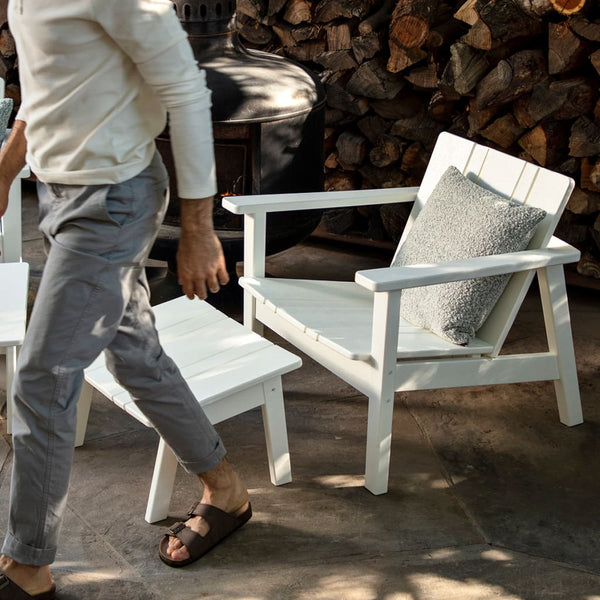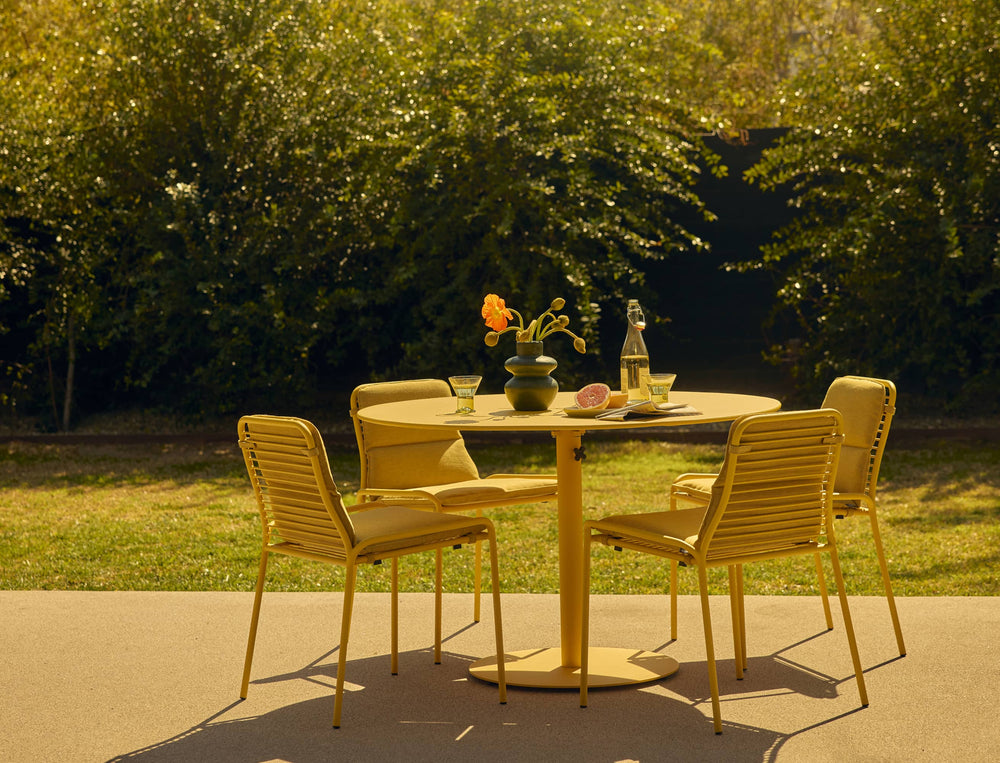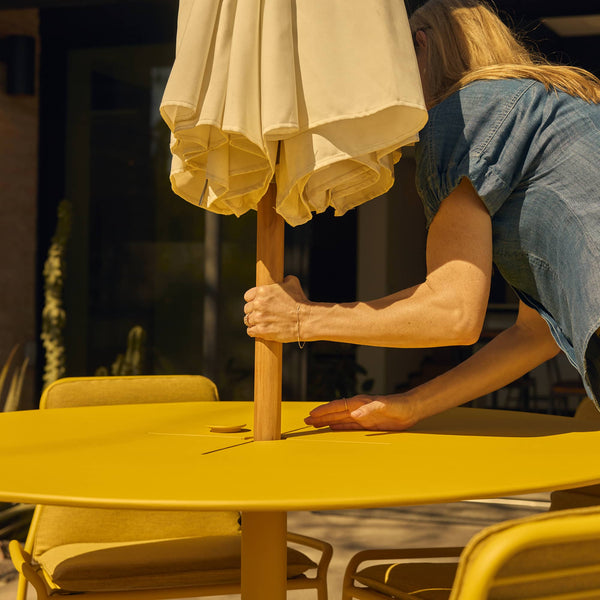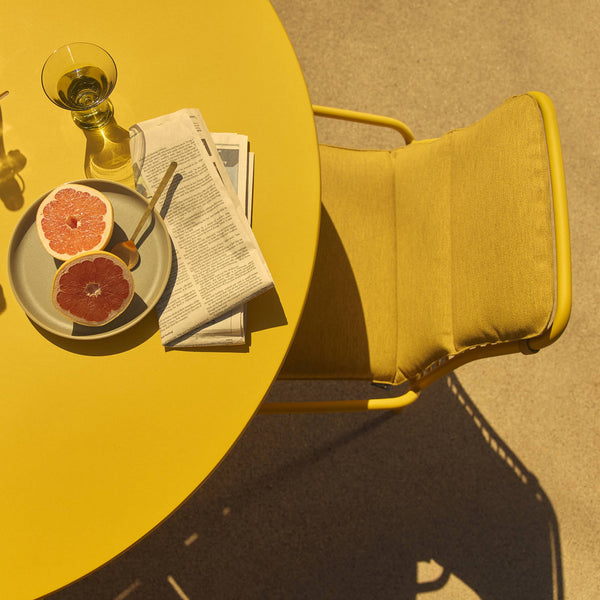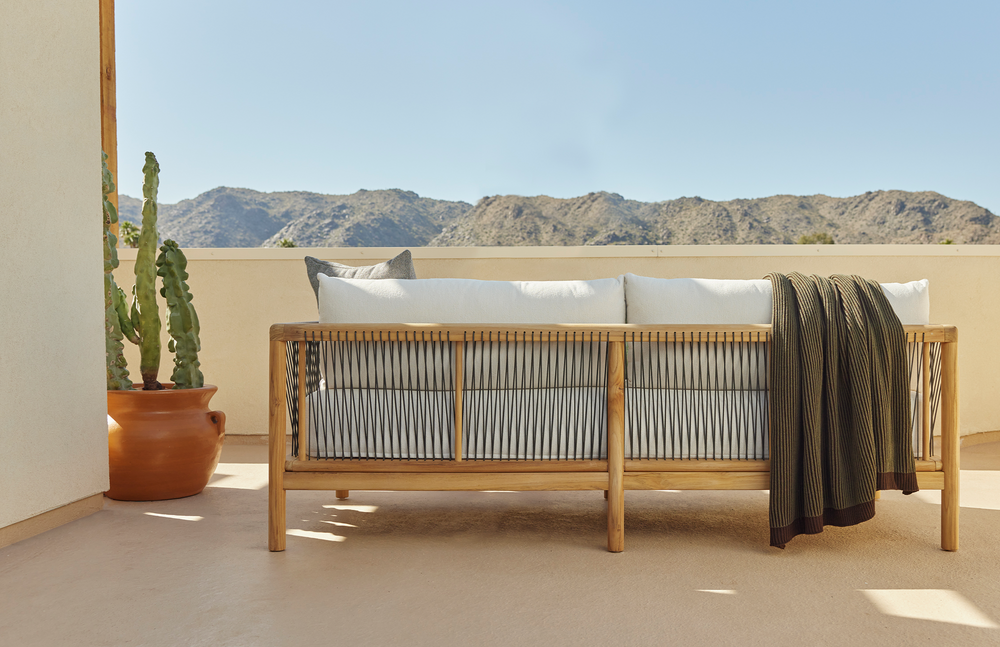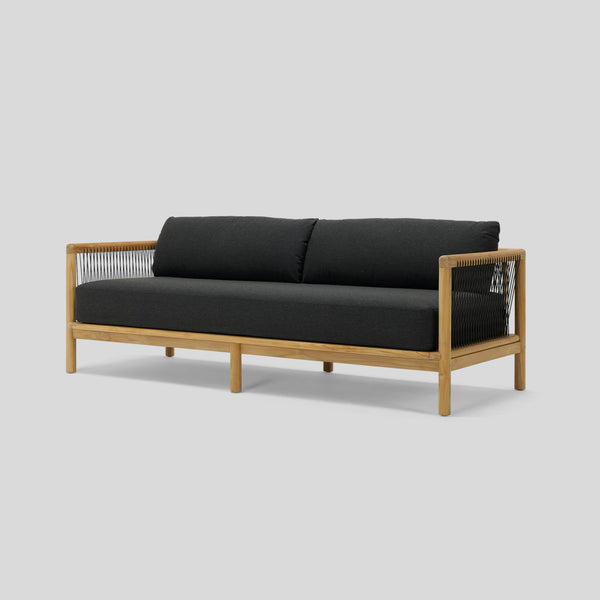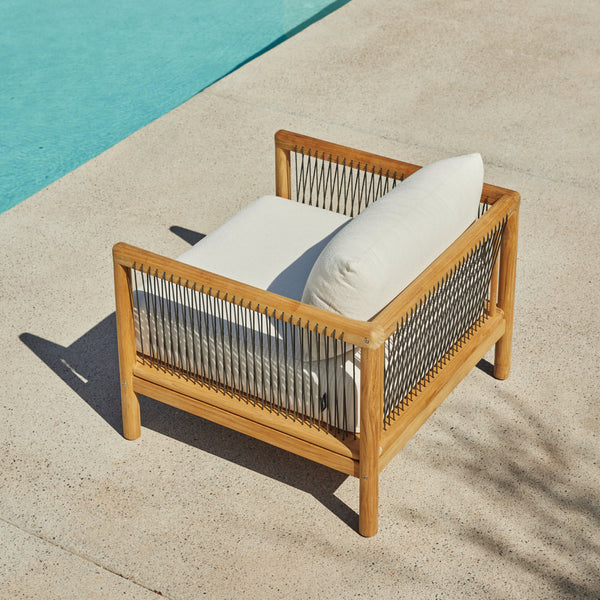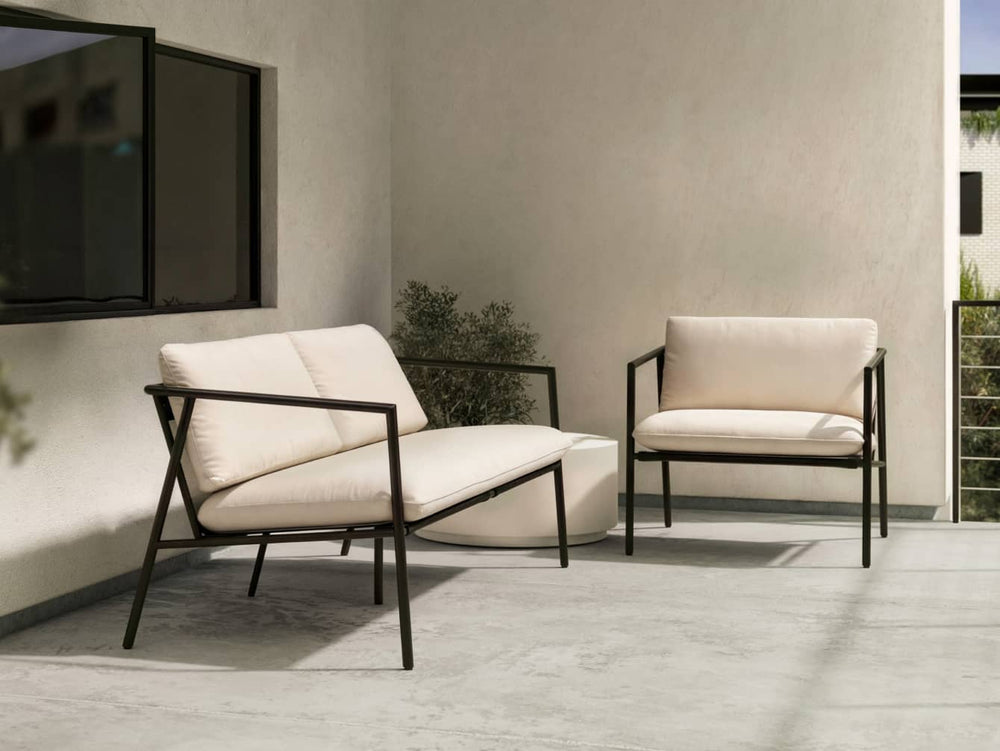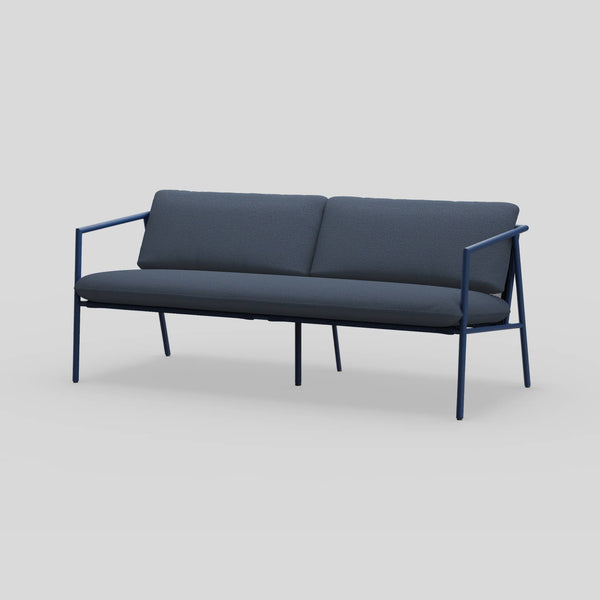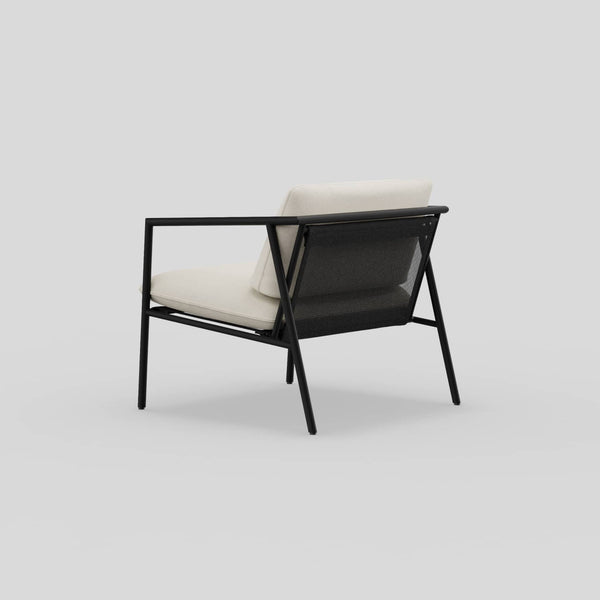How to Store Outdoor Cushions Like a Pro
Written by Neighbor Editorial Team | @neighboroutdoor | Opens in a new window. |
The ultimate guide for storing your outdoor cushions.

Effective outdoor cushion storage is essential for preserving your furniture's appearance, functionality, and lifespan.
At Neighbor, we're passionate about design-driven products that enhance your outdoor space. In this guide, we'll explain the importance of correct storage and provide expert tips to keep your patio cushions in top-notch condition throughout the off-season.
Preparing Your Outdoor Cushions
Proper preparation is the foundation for ensuring your cushions remain in excellent condition during the off-season. The first and most crucial step is cleaning your cushions to remove dirt, debris, and potential stains before storage.
Determine Cushion Material
The cleaning method you choose depends on the material of your cushions, such as fabric, vinyl, or wicker.
For Fabric Cushions
-
Prepare a Cleaning Solution: Mix a mild detergent with warm water in a bucket. Ensure the detergent is gentle to avoid damaging the fabric.
-
Scrub the Fabric: Dip a soft-bristle brush or a sponge into the soapy water. Gently scrub the fabric cushions with a brush or sponge. Be thorough but gentle to avoid fraying or damaging the fabric fibers. Pay special attention to areas with stains or dirt buildup.

-
Rinse Thoroughly: After scrubbing, rinse the fabric thoroughly with clean water to remove all soap residue. You can use a hose or a bucket of clean water for this step. Proper rinsing is essential to prevent soap residue from accumulating on the fabric, which can cause discoloration and damage over time.
- Air Dry: Once the cushions are thoroughly rinsed, allow them to air dry completely in a well-ventilated area. Avoid direct sunlight, as it can cause fading. Ensure the cushions are entirely dry before storing them to prevent mold or mildew growth during storage.

You can expedite the cleaning process by owning cushions with our Sunbrella fabric covers. They are easily maintained by hand washing or machine washing on a gentle cycle. When using a machine, zip the seat covers shut to prevent fraying on the seams and air dry for optimal results. For daily cleaning, we suggest using Sunbrella cleaning products for quick and effective results.
 For Vinyl or Plastic Cushions
For Vinyl or Plastic Cushions
-
Prepare a Cleaning Solution: Create a cleaning solution by mixing warm water with a small amount of mild soap. Ensure the soap is gentle and doesn't contain harsh chemicals that could damage the vinyl or plastic material.
-
Wipe Down the Cushions: Dip a soft cloth or sponge into the soapy water and gently wipe down the vinyl or plastic cushions. Use gentle circular motions to remove dirt and stains. Avoid using abrasive materials or brushes that could scratch the surface.
- Thoroughly Rinse and Dry: After wiping, rinse the cushions thoroughly with clean water to remove any soap residue. Ensure all soap is washed away as leftover residue can attract dirt. Dry the cushions completely with a clean, dry cloth. Proper drying prevents water spots and keeps the cushions in good condition.
For Wicker or Rattan Cushions
-
Remove Dirt from Crevices: Use a brush with soft bristles to gently remove dirt and debris from the crevices of the wicker or rattan cushions. Be thorough but gentle to avoid damaging the woven material.
- Consider a Vacuum Cleaner: For a more efficient cleaning process, consider using a vacuum cleaner with a brush attachment. This method can help remove dirt and dust from hard-to-reach areas without putting too much pressure on the material.
Stain Removal
When dealing with stubborn stains on outdoor cushions, you should employ specific techniques tailored to the type of stain. For food stains, start by scraping off any solid residue gently. Then, blot the stained area with a mixture of water and mild dish soap using a clean cloth, working from the outside of the stain toward the center. Rinse thoroughly and let it air dry.

For red wine stains, blot the area with a clean, absorbent cloth to remove excess liquid. Mix a solution of water, dish soap, and white vinegar, and gently dab the stain with this mixture. Rinse and air dry. For bird droppings, gently scrape off the dried residue with a plastic utensil. Mix water and a small amount of ammonia-free detergent, then blot the stain. Rinse thoroughly and air dry. Always perform a spot test in an inconspicuous area before applying any cleaning solution to ensure it doesn't damage the fabric.
Mold and Mildew Treatment
Mold and mildew can develop on cushions that have been exposed to moisture. To effectively address this issue, create a cleaning solution by mixing equal parts water and white vinegar. Gently scrub the affected areas of the cushions with this solution, using a brush with soft bristles. This careful scrubbing process helps eliminate visible mold and mildew while inhibiting their future growth.
After scrubbing, be sure to rinse the cushions thoroughly with clean water to remove any remaining vinegar solution. Properly drying the cushions afterward is crucial to prevent the return of mold and mildew.
Drying the Cushions
Ensuring that cushions are thoroughly dry before storage will prevent issues like mildew and mold growth, which can seriously compromise their integrity. Various drying methods can be used, with air drying being a natural and effective choice. Placing the cushions in a well-ventilated area, preferably under direct sunlight, allows them to air out completely.
Choosing the Right Storage Location

Selecting the right long-term storage location is crucial for shielding your outdoor cushions from moisture, UV rays, extreme temperatures, and pests. Let’s take a closer look at all of these variables:
Indoor vs. Outdoor Storage
Indoor storage (e.g., a shed, garage, or basement)
Pros: Indoor storage, such as a shed, garage, or basement, provides excellent protection from extreme weather conditions and direct sunlight. It prevents cushions from fading and extends their lifespan. Adequate ventilation in indoor spaces prevents moisture buildup, preserving the cushions' quality.
Cons: Limited indoor space might be a challenge for larger cushions or if storage space is already in use.
Outdoor storage (e.g., storage bins, deck boxes, or cushion storage bags)
Pros: Outdoor storage options like storage bins, storage benches, deck boxes, or cushion storage bags are convenient. They offer space-saving solutions, especially for smaller outdoor spaces. High-quality, weather-resistant containers protect cushions from weather elements.
Cons: Outdoor storage might require additional weatherproofing measures to prevent moisture and pests. While convenient, the cushions could still be exposed to harsh weather conditions.
Climate Considerations
Choose a storage location that suits your local climate. For example, the winter months demand protective storage to shield cushions from cold, snow, and ice, preventing damage. Opt for solutions providing insulation and extreme cold protection.
Protecting from Sunlight
Direct sunlight exposure can cause fading and deterioration to your outdoor cushions over time. The sun's UV rays can break down fabric fibers, leading to color loss and weakening the material. To counter this, it's crucial to choose a storage spot that minimizes sunlight exposure. Opt for shaded areas, or use protective covers when storing cushions outdoors.
Pest Prevention
Pests like insects and rodents pose a threat to stored cushions, causing damage over time. To prevent this, use airtight containers to create a barrier that keeps pests out. Additionally, consider using natural repellents like cedar blocks or lavender sachets within the storage area.
Properly Storing Outdoor Cushions
You can maximize storage space by carefully folding or stacking cushions, especially for larger sets, where labeling or color-coding specific pieces can simplify identification.
Storing Specialty Cushions
Specialty cushions, each with distinct shapes and designs, come with their own set of storage challenges. Let's look more closely at their specific storage requirements:
Outdoor Sofa Cushions
Outdoor sofa cushions are larger and thicker compared to standard chair cushions. To ensure their protection during storage, place these cushions in large cushion storage bags or containers. You could also individually wrap them in protective outdoor furniture covers.
Chaise Lounge Cushions
Chaise lounge cushions feature a distinctive long and narrow shape. To optimize storage space, it's recommended to fold these cushions once in half lengthwise. You could also seek out concealed locations, such as underneath or behind indoor sofas, to store them.
Dining Cushions
Dining set cushions vary in shapes and sizes, demanding thoughtful storage solutions. An effective approach involves labeling or categorizing these cushions based on their respective chairs or seats. This simple organizational method significantly simplifies the reassembly process, allowing for easy identification and hassle-free setup when it's time to use them again.
Built-in Padding or Unique Shapes
Specialty cushions with built-in padding or unique shapes require special care to preserve their structural integrity. Tailored storage options prevent undue pressure on the padding, ensuring the cushions retain their original shape and comfort for longer periods.
Covering Specialty Cushions
Cover specialty cushions with tie-downs or fasteners, especially in windy conditions. We offer durable protective covers tailored for various outdoor cushion sizes and shapes.
Storing Accessories
To keep outdoor accessories in optimal condition, store them separately from your cushions. Utilize cushion storage bags, storage benches, or designated containers to maintain their cleanliness and prolong their lifespan.
Conclusion
By following these recommendations, you can extend the lifespan and preserve the appearance of your outdoor furniture cushions. For tips on maintenance of your high-quality patio furniture and accessories, we’ve got you covered year-round.

